We’re excited to bring you a roundup of October 2020 fantasy book releases by and about women and nonbinary folk. Let us know what you’re looking forward to, or any titles that we’ve missed, in the comments!

Fifty Latinx Authors and Books to Celebrate Latinx Heritage Month
Happy Latinx Heritage Month! September 15-October 15 is federally recognized as National Hispanic Heritage Month in the United States. While every month is worth examining the colonialist histories, commemorating the cultures, and recognizing the contributions of individuals with heritage from North, Central, and South America, we at Sirens would like to take a moment to feature the extraordinary speculative work of fifty of these individuals.
In taking this moment, we would also like to acknowledge the complexity of the terms “Latinx” and the even less perfect “Hispanic.” Both are words rooted in European imperialism and its subsequent violent transgressions against Black and indigenous bodies, and these terms are still exclusionary. We are committed to interrogating the power structures that have historically pushed light-skinned, Spanish-speaking women to the forefront—those who come to mind when presented with the term “Latina”—as well as uplifting Afro-Latinx and Indigenous voices.
There’s so much more to Latinx speculative work than the incomparable work of Isabel Allende and Laura Esquivel, and we encourage you to ponder our incredible list of fifty speculative works by fifty magnificent Latinx women, nonbinary, and trans authors. Some of these works are written by immigrants or diaspora members a few generations beyond; others are translated into English from Spanish. They follow rich literary lineages of magical realism and fabulism, or remake SFF entirely on their own terms. They look to the past or the future or sit in the complicated present. They skewer colonialism with an incisive point or gently weave in regional myths and folklore. Fifty works of novels, short stories, and poetry—all blazing and all magical.
And if you’re looking to buy these books, check out this list of bookstores owned by Latinx folks, courtesy of Latinx in Publishing!
- Never Look Back by Lilliam Rivera
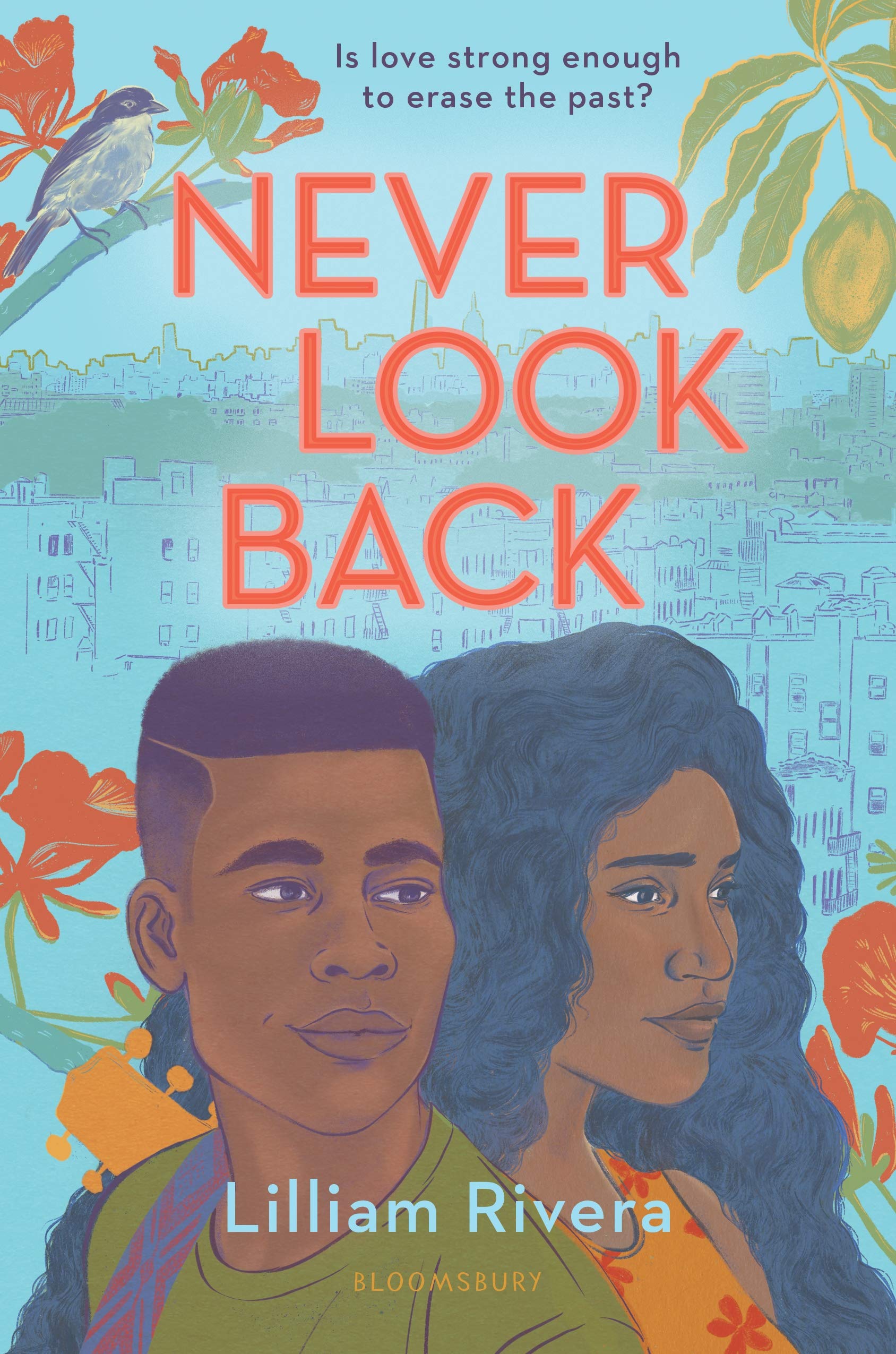

This modern retelling of Orpheus and Eurydice in the Bronx pulses with the bachata rhythm of hazy summer nights. Come for the cute romance, stay for the examination of colonialism, toxic masculinity, mental health, and intertwined mythologies.
- Her Body and Other Parties by Carmen Maria Machado
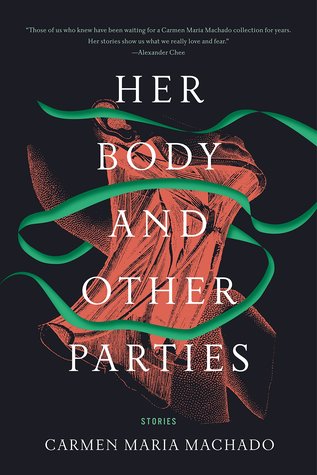

Fuck-you feminist stories about men who can’t leave well enough alone, the exploitation of women by popular culture, what it means to be a hysterical woman, and more. Breathtaking, dazzling, shattering.
- Cemetery Boys by Aiden Thomas
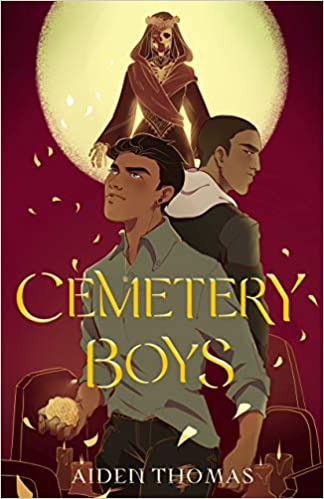

A Latinx trans boy with a traditional family tries to prove he’s a brujo by summoning a ghost. But he summons the wrong boy—and falls for him instead! A cozy, heartfelt book about strength, affirmation, and honoring your truth.
- Heartwood: Non-Binary Tales of Sylvan Fantasy edited by Joamette Gil
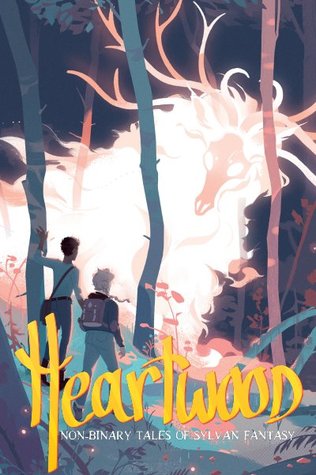

Gil curates a collection of nonbinary creators’ graphic works about finding yourself and your power in that most mystical of places: the wood. Buy this one in hardcover if you can: It has gilded edges!
- Gods of Jade and Shadow by Silvia Moreno-Garcia
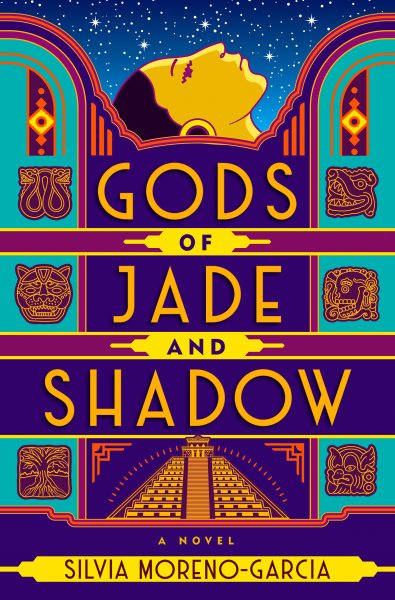

In 1920s Mexico, Casiopea opens a box while cleaning her grandfather’s house and accidentally frees the Mayan god of death. In this swingin’ blend of fantasy and Mexican folklore, she makes a bargain that starts an odyssey.
- Dreaming in Cuban by Cristina García
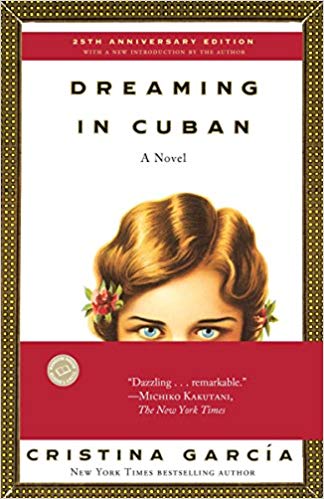

Set against the backdrop of the Cuban revolution, Dreaming in Cuban explores the lives of three generations of Cuban women and their magic. Transcendently beautifully crafted, wrought with magical realism, and full of complex women.
- Dark and Deepest Red by Anna-Marie McLemore
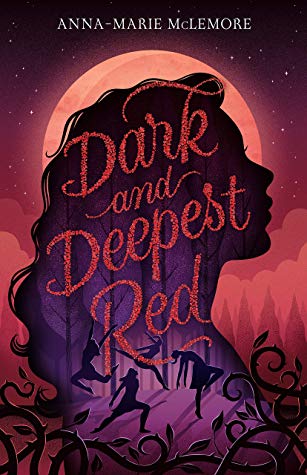

No one writes queer fairytales like McLemore, and this one will swallow you whole with its luscious prose, swoonworthy romance, and inexplicably cursed shoes. You’ll want to sink into this glorious work that spans centuries.
- Nightlights by Lorena Alvarez
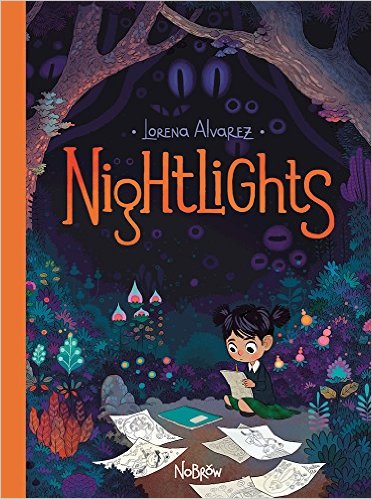

A gorgeously illustrated exploration of fear, bravery and creativity. Sandy is a daydreamer trying to navigate a world of rules and schedules—but a mysterious new girl helps her realize the value of her art and, yes, math.
- The Tiger’s Daughter by K Arsenault Rivera
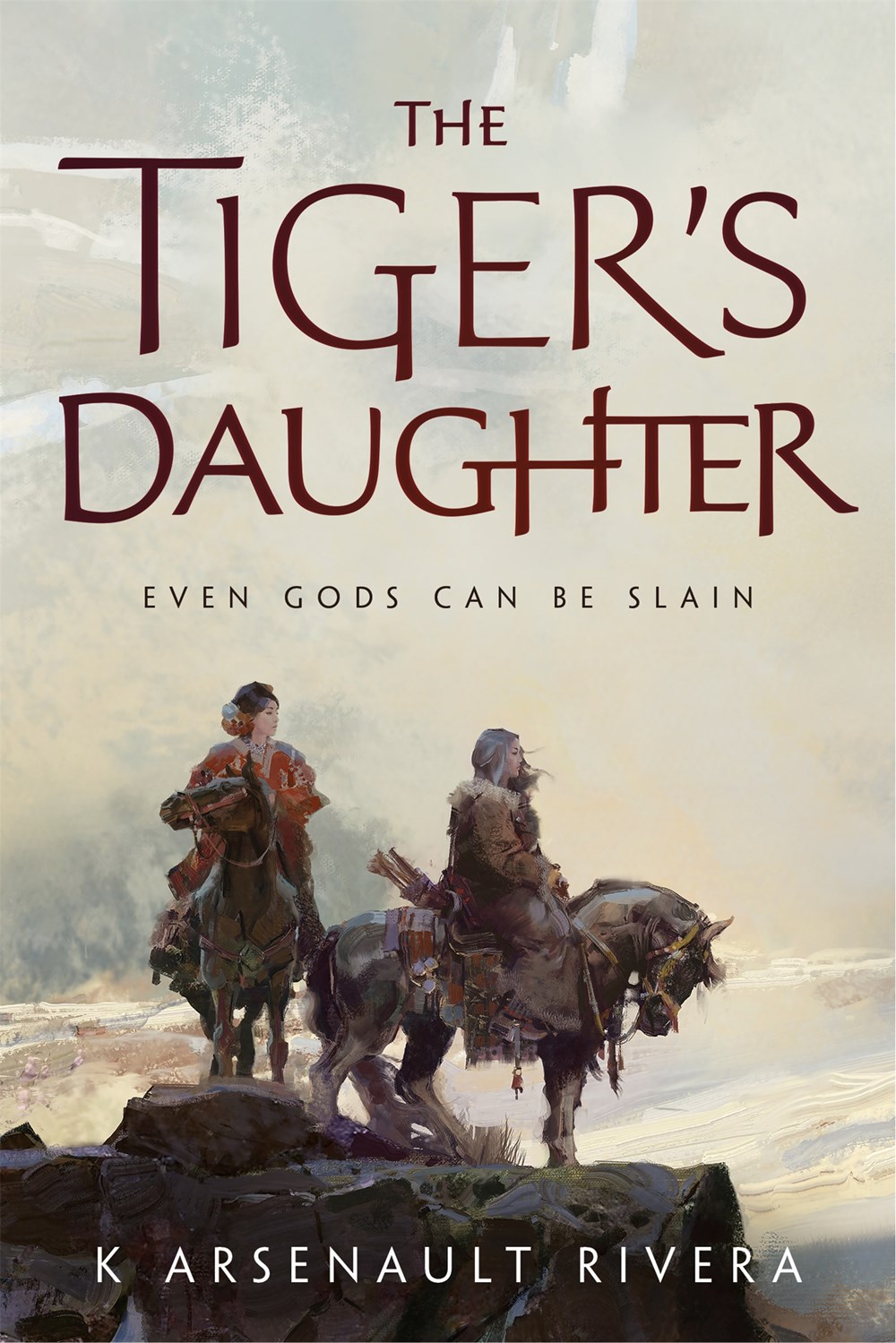

An elegant, lavish epic fantasy about two fierce girls—one a future empress, the other a warlord—and their blazing, unstoppable love for each other, even with so much of an empire against them.
- American Street by Ibi Zoboi
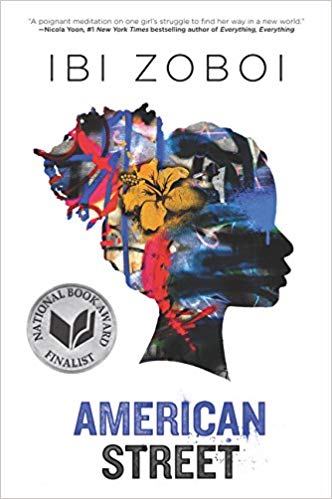

When her mother is detained by immigration, Fabiola continues to Detroit to stay with her raucous cousins. Zoboi’s magical work melds hard, unfamiliar Detroit with Haitian Vodou and Fabiola’s perceptions of America to create something new.
- Love, Sugar, Magic: A Dash of Trouble by Anna Meriano
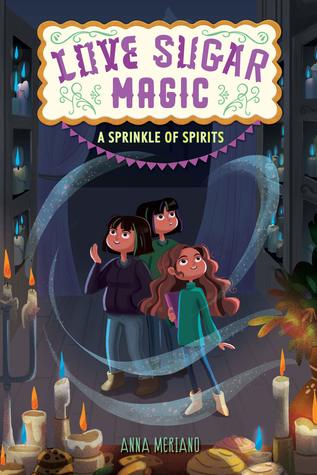

This book gathers you up with scents of cinnamon and cardamom and baking bread and sugary cookies, and then delivers a smart girl-power story about growing up and making mistakes and claiming your place.
- The Murmur of Bees by Sofía Segovia
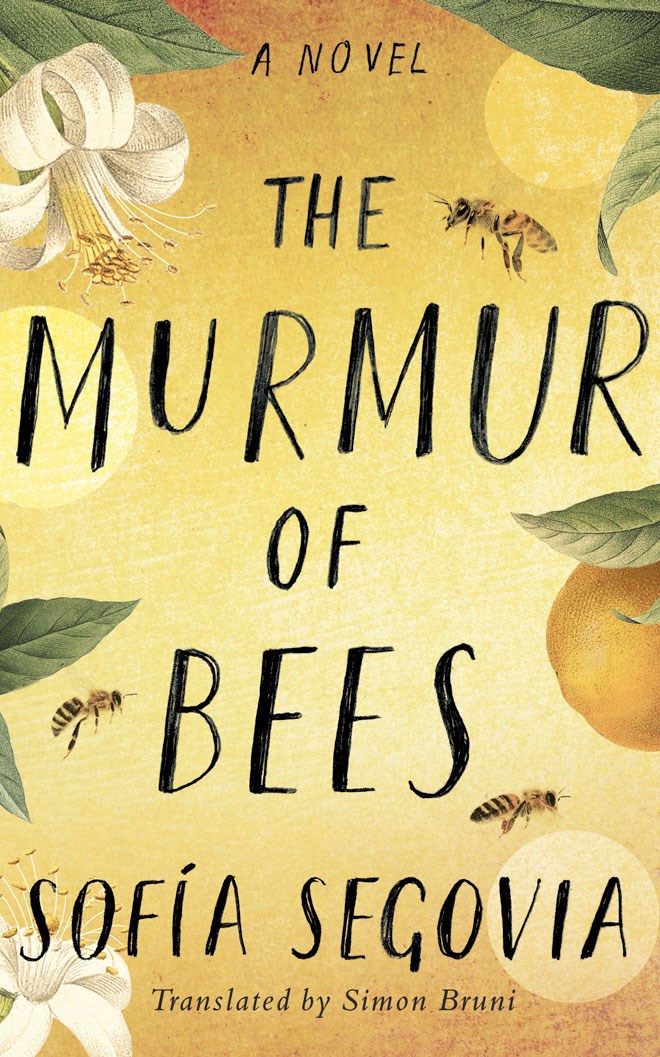

Historical fiction meets magical realism in the first of Segovia’s work translated into English. During the Mexican Revolution and the Spanish flu pandemic, a child cloaked in bees is born with a cleft palate and visions of the future.
- Labyrinth Lost by Zoraida Córdova
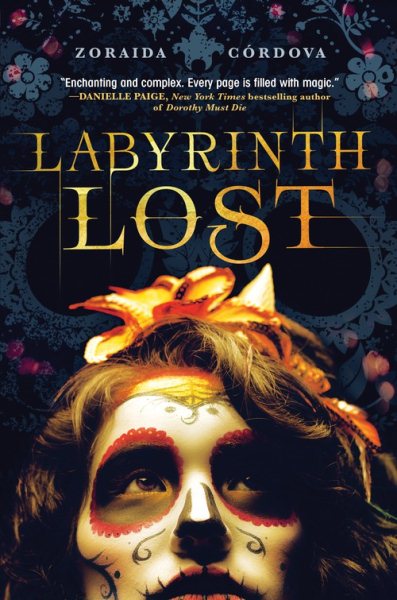

Alex is a magic-hating bruja, so she casts a canto to rid herself of her powers. But it backfires (obviously) and she must embrace her power (and find her courage) to save her family. Bursting with adventure and humanity.
- Ghost Squad by Claribel Ortega
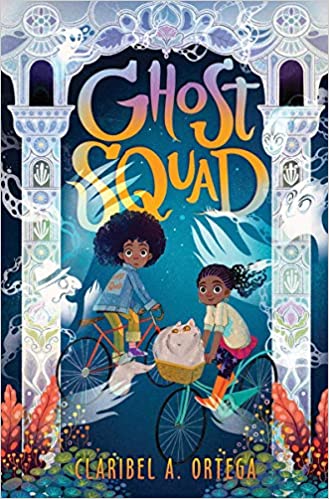

A charming book for lovers of spooky things and found family, centering a plucky Dominican-American girl and her spunky best friend. Ortega adds a magical cat and a witchy grandma, and conjures an adventure that’s also a tender portrayal of grief.
- Blud by Rachel McKibbens
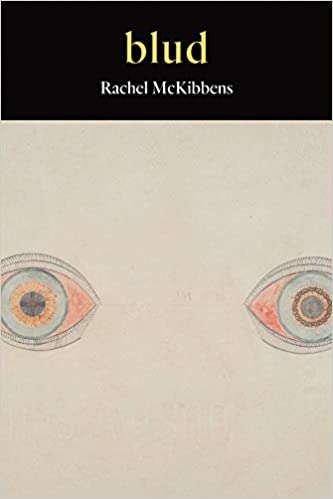

McKibbens’s fierce poetry collection is unflinching, essential reading. Her precise language paints the clearest of pictures, while giving the reader space to breathe—and consider her examination of trauma, violence, heartbreak, and ultimately beauty.
- On These Magic Shores by Yamile Saied Méndez
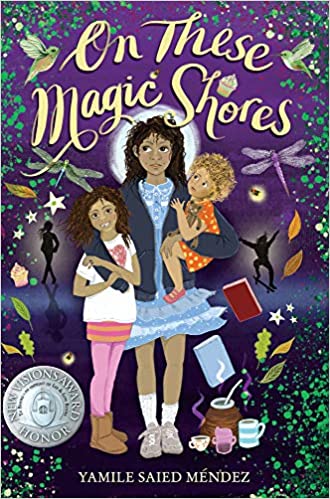

An unapologetic deconstruction of Peter Pan, On These Magic Shores sings the stories of immigrant children who have no choice but to grow up. After her mom disappears, young Minnie cares for two sisters—but who says there can’t be some pixie dust?
- Infomocracy by Malka Older
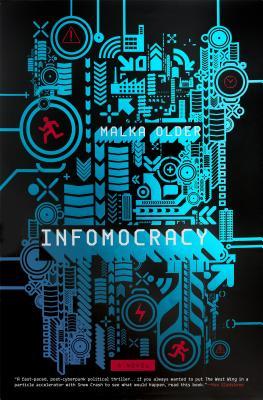

In this political, techy, futuristic thriller that made all the Best of Year lists, geographical borders span continents and the heroes are data analysts, stats wizards, and cyberpunks. You’ll race through Older’s brilliant take on microdemocracy.
- The Island of Eternal Love by Daína Chaviano


The most-translated Cuban book of all time, The Island of Eternal Love is a multigenerational tale of hauntings and great loves, and that complicated, magical place that Cuba occupies in the hearts of exiles living in Miami.
- We Set the Dark on Fire by Tehlor Kay Mejia
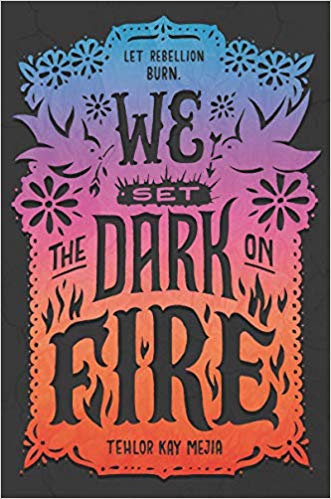

Thoughtful worldbuilding lights up this all-Latinx dystopia, where girls are trained to become the wives of powerful men. Walled borders, immigration politics, and a swoony queer twist await you; read when you want to burn it all down.
- Curse of the Night Witch by Alex Aster
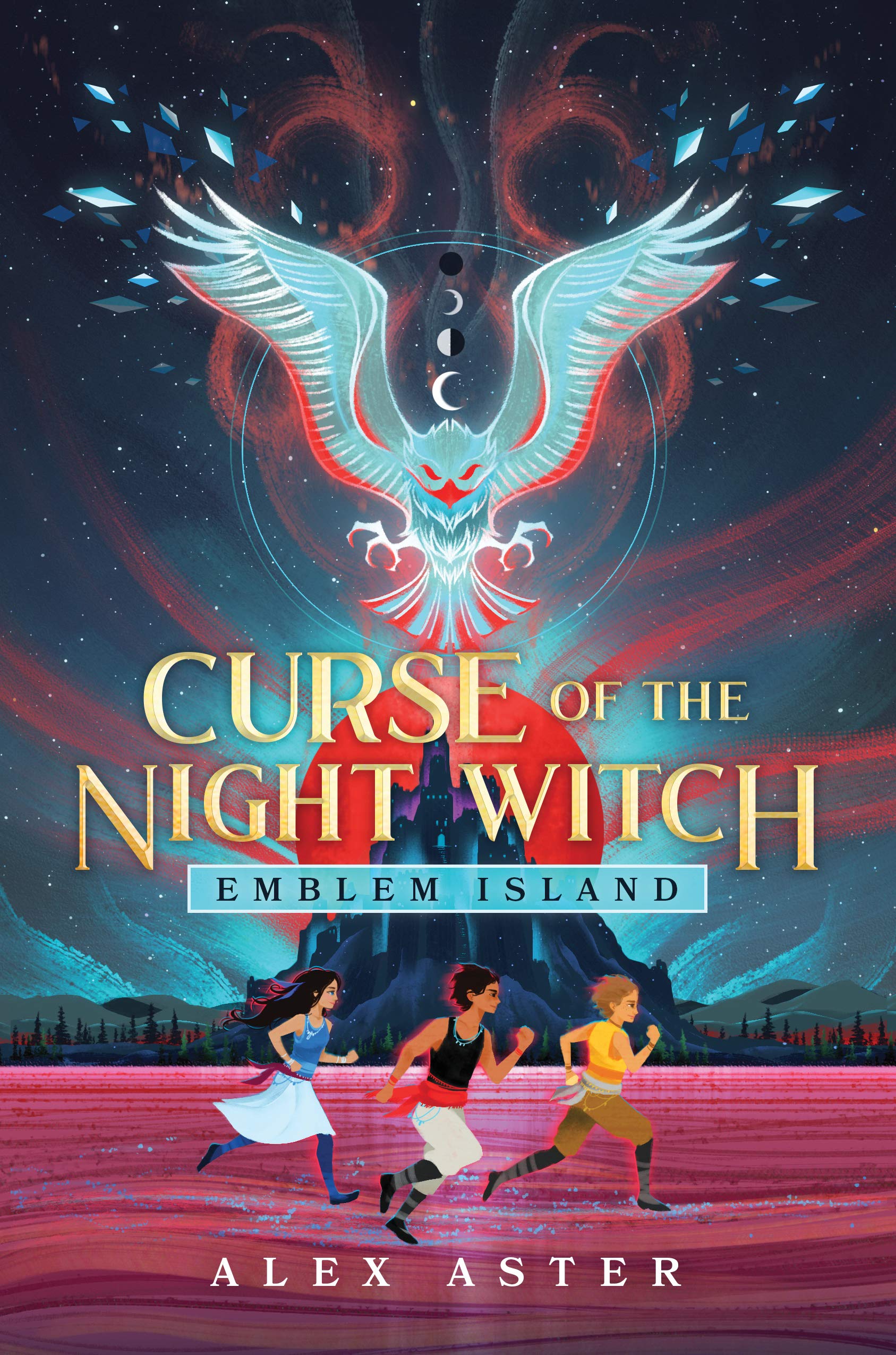

On a magical island, folks are born with a marking that determines their fate. But Tor doesn’t like his, so he embarks on a quest for the Night Witch. Aster’s gem of a story about stories interweaves Latinx folktales (and monsters!).
- Diamond City by Francesca Flores
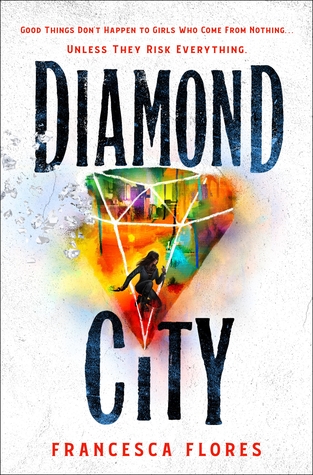

A kickass assassin girl—unloved and unwanted by society—finds her worth and takes down false idols in an industrial fantasy setting. Be prepared for blood, magic, an irresistible city setting, and a blistering fast pace. Did we mention murder?
- Submerged, Volume 1 by Vita Ayala, with Lisa Sterle
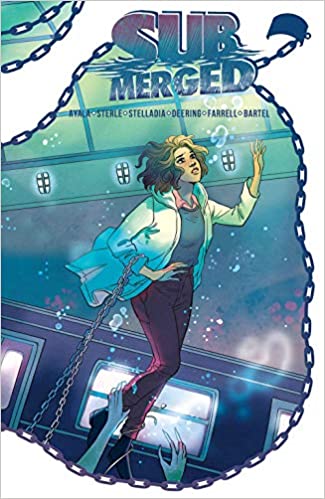
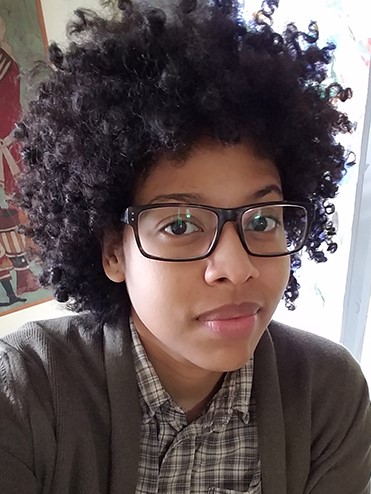
Siblings are at the heart of this ethereal comic that begins in the NYC subways during a storm. The themes of queer identity, complex family dynamics, and infusion of Greek myth all invite readers to dive right in.
- Iron Cast by Destiny Soria
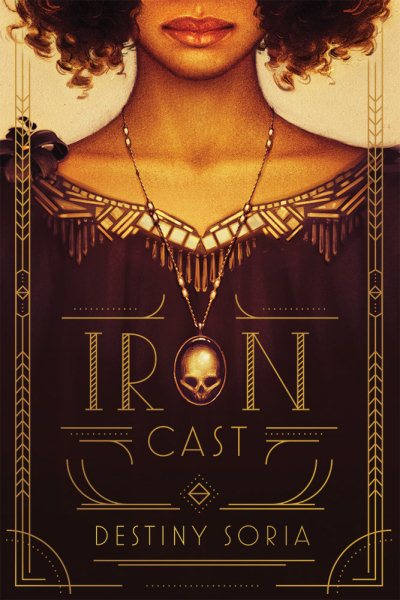

A speakeasy-style novel, set in Boston 1919, where two inseparable friends can do magic—illegal magic. And in this world of persecution, Iron Cast delves deep on the bravery, humanity, and support required to be someone society doesn’t privilege.
- Muse Squad by Chantel Acevedo
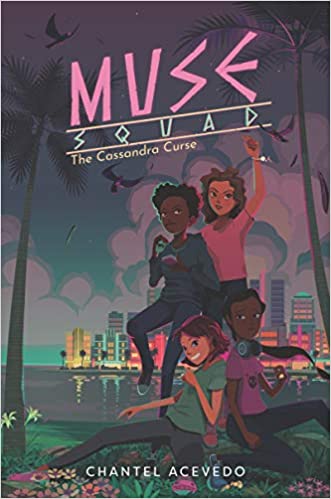

A Cuban-American girl happens to be the muse—yes, from Greek myth—of epic poetry. And there are other junior muses! Magic! And a Muse Headquarters! An adorable book about being moved by something, whether that’s to create art or change the world.
- Mouthful of Birds by Samanta Schweblin
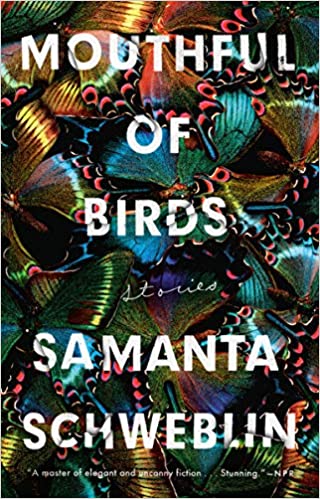

These twenty mesmerizing, eerie short stories translated from Spanish carry on the rich tradition of psychological horror mixed in with the surreal and fantastical. Try not to read before bed, though; they are meant to make you shiver.
- The Grief Keeper by Alexandra Villasante
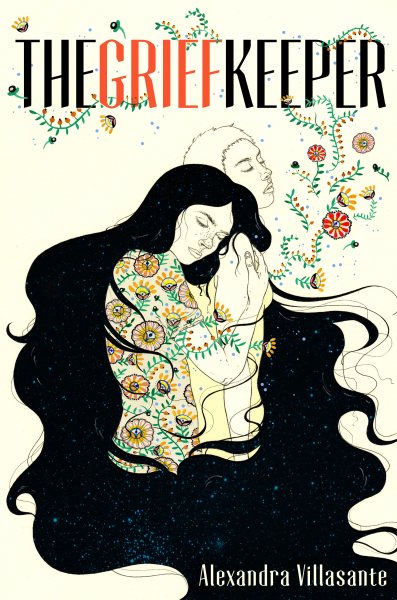

When a Salvadorian girl is caught crossing the border, she can stay in the US, legally, by absorbing grief into her own body to save a life. A gentle work of immigration, class, queer love, and traumas that bury those with few options.
- Summer of the Mariposas by Guadalupe Garcia McCall
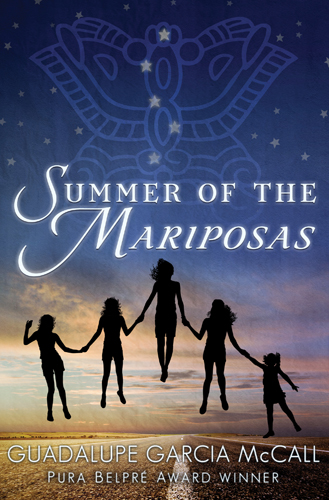

Five Mexican-American sisters cross the border—and end up in their own reinvented Odyssey, full of monsters and magic. Sometimes, you very much need your sisters—all your sisters—to get you through.
- Kingdom of Women by Rosalie Morales Kearns


In the near future, vengeful women wreak vigilante justice and the only female Catholic priest left becomes a reluctant hero. Kingdom of Women deconstructs justice, morality, and mercy within oppressed systems too close to our own.
- The Haunted Girl by Lisa M. Bradley
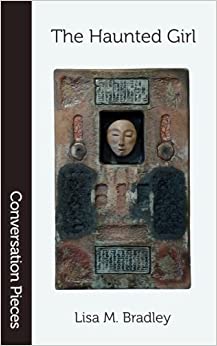

Tinged with autobiography, queer Tejana Bradley’s poetry runs vast and wild, as she explores monstrousness, danger, decay, and unexpected beauty in this collection. Bradley looks into the abyss in her work. Will you?
- Woven in Moonlight by Isabel Ibañez
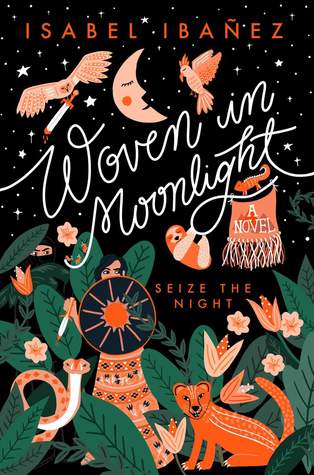

Lovers of complex court intrigue, rejoice! In a fantasy Bolivia, a decoy royal finally gets an opportunity to exact revenge on her oppressors—but rebellion is always more complicated than one hopes. Also: the opulent banquet descriptions!
- Lobizona by Romina Garber
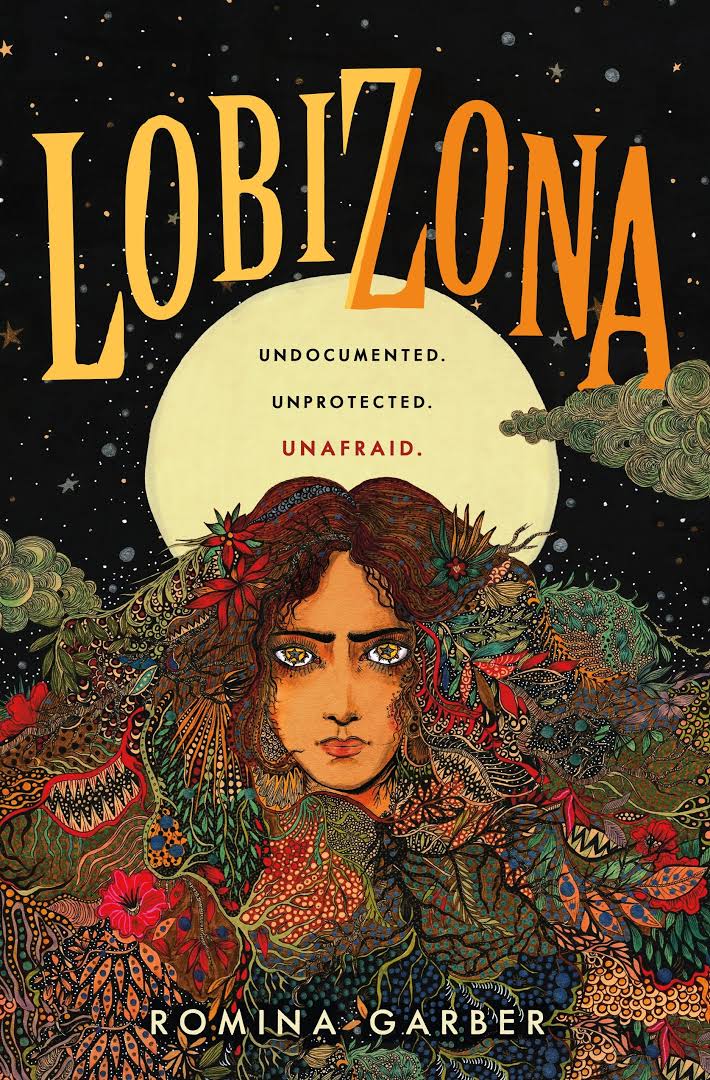

When a girl is caught between US immigration hell and the stigma of her starry yellow eyes in her native Argentina, Garber brings in witches and werewolves! With nods to Argentine lore and cozy boarding schools, Lobizona is ultimately about belonging
- America, Volume 1 by Gabby Rivera, with Joe Quinones


Your fave Young Avenger now has her own origin story. Rivera’s America Chavez is surrounded by her Latinx communities, attends college, and ponders her place in the multiverse. And Captain America’s along for the ride.
- Beastgirl and Other Origin Myths by Elizabeth Acevedo
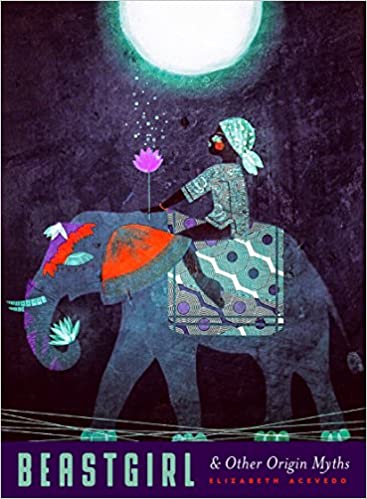

Award-winning poet Acevedo’s slim but impactful volume of poetry centers on Dominican-American identity and culture. The work is contemporary, infused with mythology and a dash of folklore, celebrating fierce, beastly girls.
- Trinity Sight by Jennifer Givhan
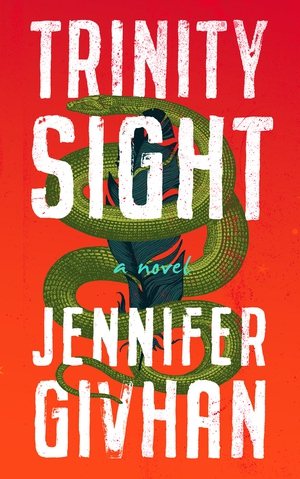

Weaving together Chicanx and indigenous storytelling with apocalyptic fiction, this tapestry of a novel intertwines science and faith, ancestry and legacy, nature and climate change—and it stars an anthropology professor pregnant with twins.
- Nocturna by Maya Motayne
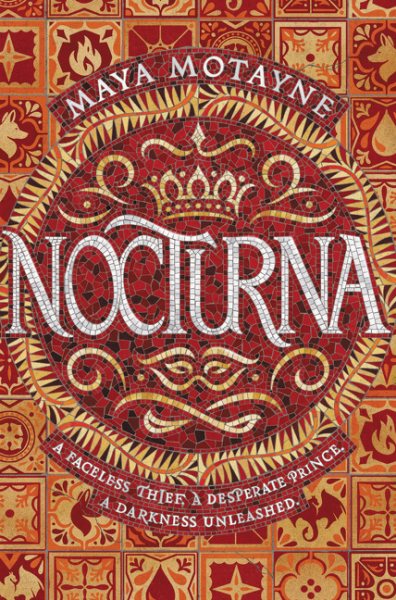

A shapeshifting face stealer matches wits with a grief-ridden prince in this realm based on Dominican culture. But when an evil god is accidentally released from capture, their high fantasy adventure starts—and they must team up to save the world.
- Spirits of the Ordinary by Kathleen Alcalá
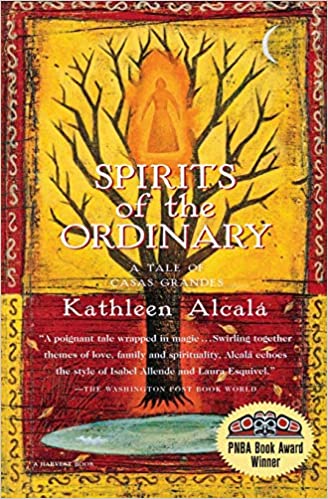

This magical, multigenerational tale follows a family in northern Mexico at the turn of the last century—and centers faith with its Catholic society, Jewish family, and exploration of the beliefs and persecution of Indigenous peoples.
- Women Who Run with the Wolves by Dr. Clarissa Pinkola Estés
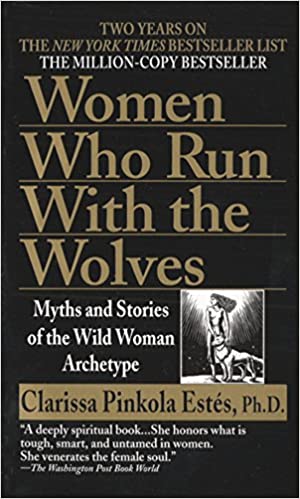

Estés collects and explores fairy tales, folklore, and myths surrounding the wild woman archetype—and then argues that women have been suffocated, constrained, civilized out of our magical, feral natures.
- Dark Constellations by Pola Oloixarac
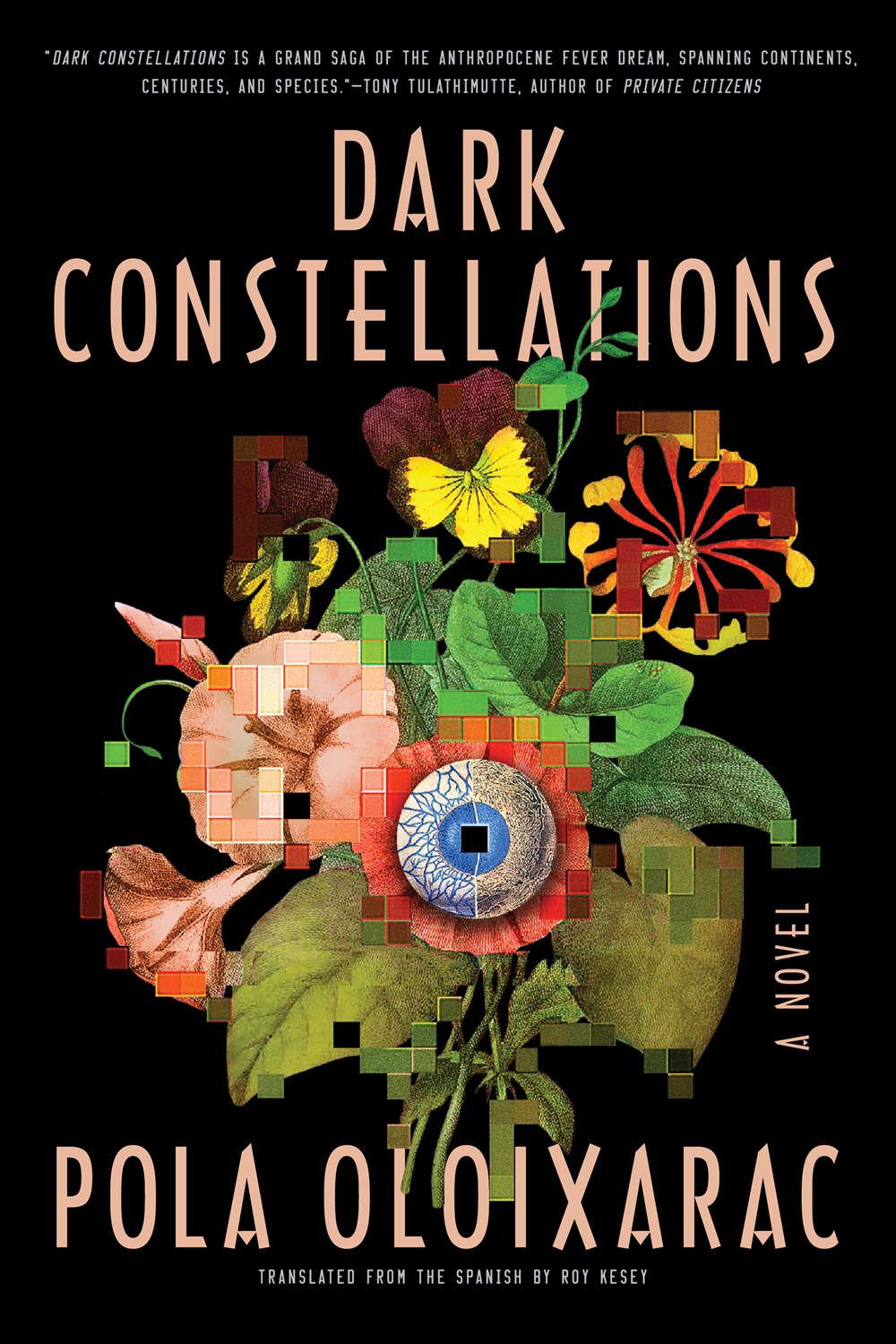

This techy, cyberpunky book of big ideas will confound genre purists but is a reward for lovers of experimental fiction. Three narratives set in Argentina and beyond, over 150 years, are tied together by the dark spaces between the lights.
- Category Five by Ann Dávila Cardinal
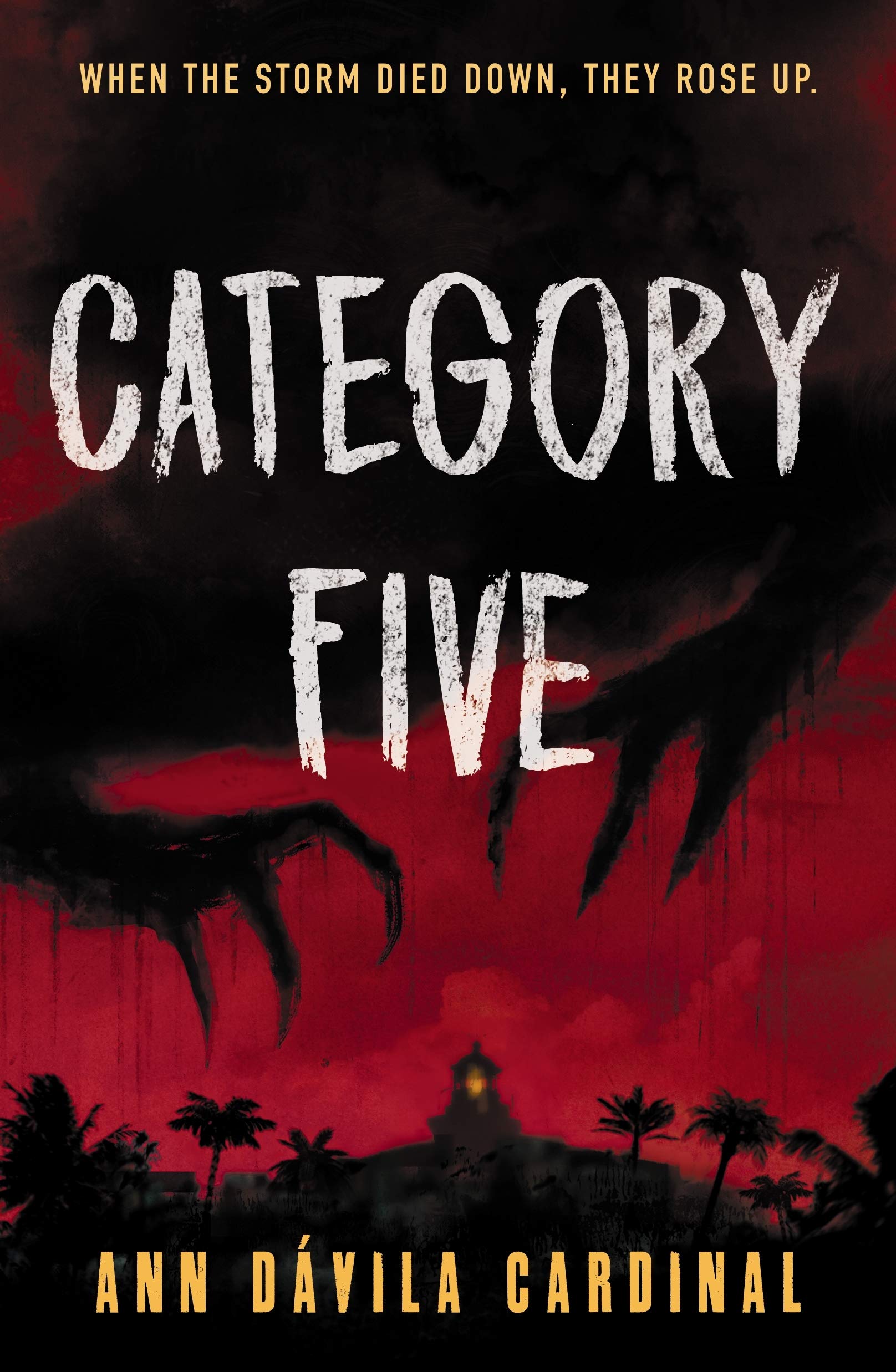

Apocalypse already came to Puerto Rico when Hurricane Maria made landfall. In its aftermath, a group of teens must solve a paranormal murder mystery, somehow tied to reawakened dead ever since the developers began building the new resort.
- All of Us with Wings by Michelle Ruiz Keil
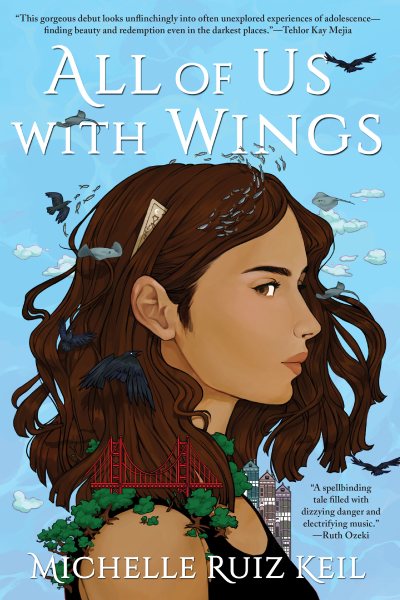

This punk-rock coming-of-age novel about found family and recovery from trauma is set in an alternate, witchy San Francisco. Sometimes the journey to find yourself is filled with twists, magical beings, and a whole lot of free love.
- Echo by Pam Muñoz Ryan
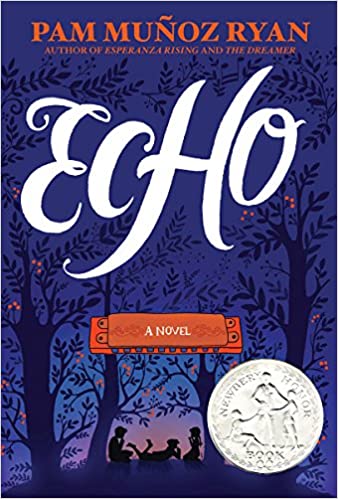

A true opus that traces a magical harmonica through the lives of three children in 1930s/40s. Framed as a fairytale with a heart of historical fiction, Echo illuminates the power of music to inspire hope, kindness and courage in the most difficult times.
- All the Wind in the World by Samantha Mabry
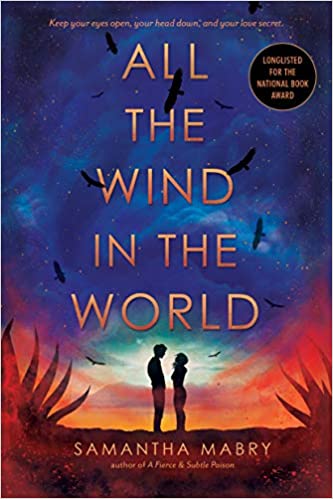

Set in a wasteland post-environmental collapse, multiracial Sarah Jac works on a farm in the Southwest with her forbidden sweetheart. All the Wind in the World is a western at its core, musing on the ways land and its workers have been pushed to the brink.
- All These Monsters by Amy Tintera
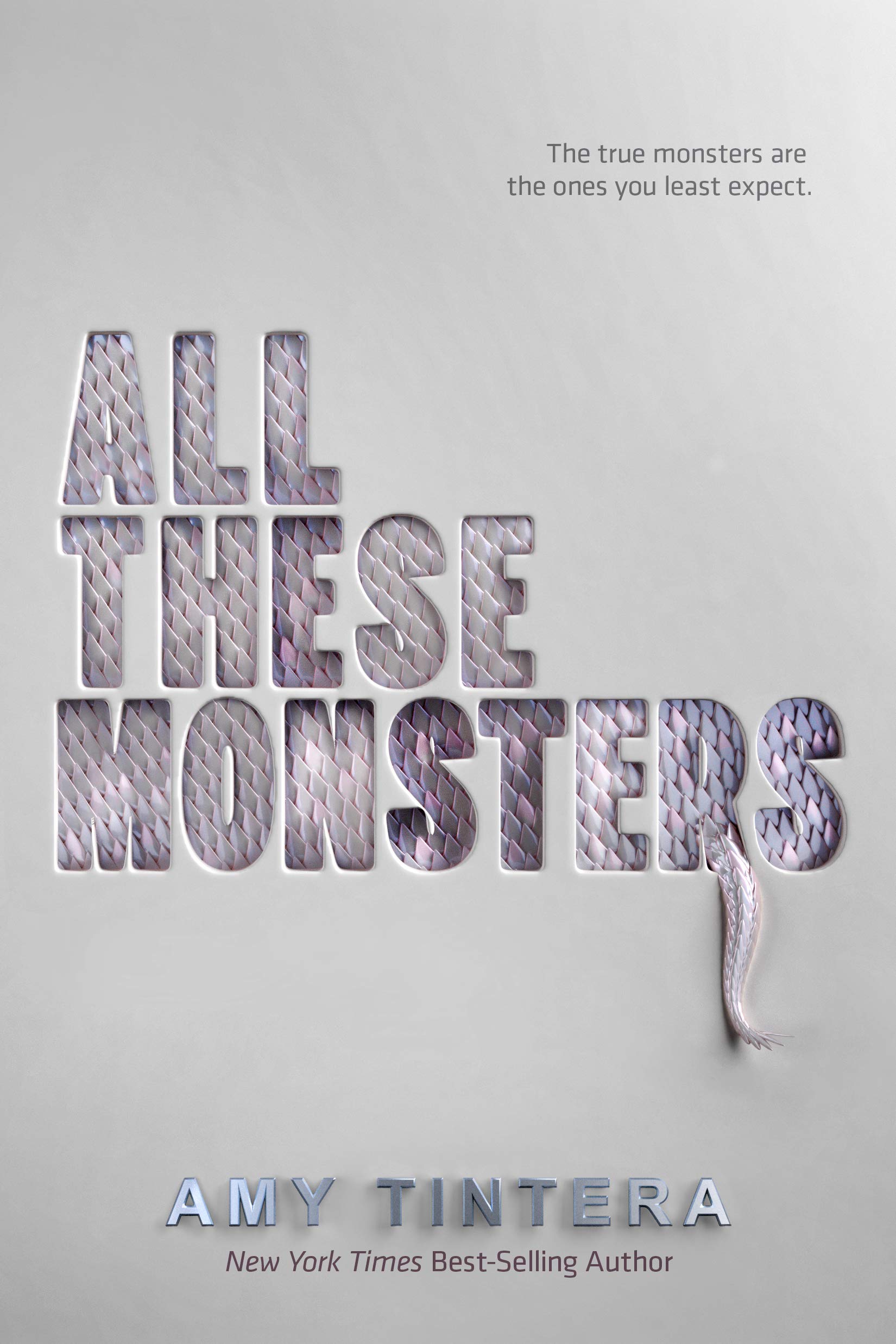

You think this is a dystopian novel about fighting giant scarabs, large monsters that are threats to humans across the globe, but it’s really about how a biracial Mexican-American girl learns how to break the cycle of abuse and begin to heal.
- Sia Martinez and the Moonlit Beginning of Everything by Raquel Vasquez Gilliland
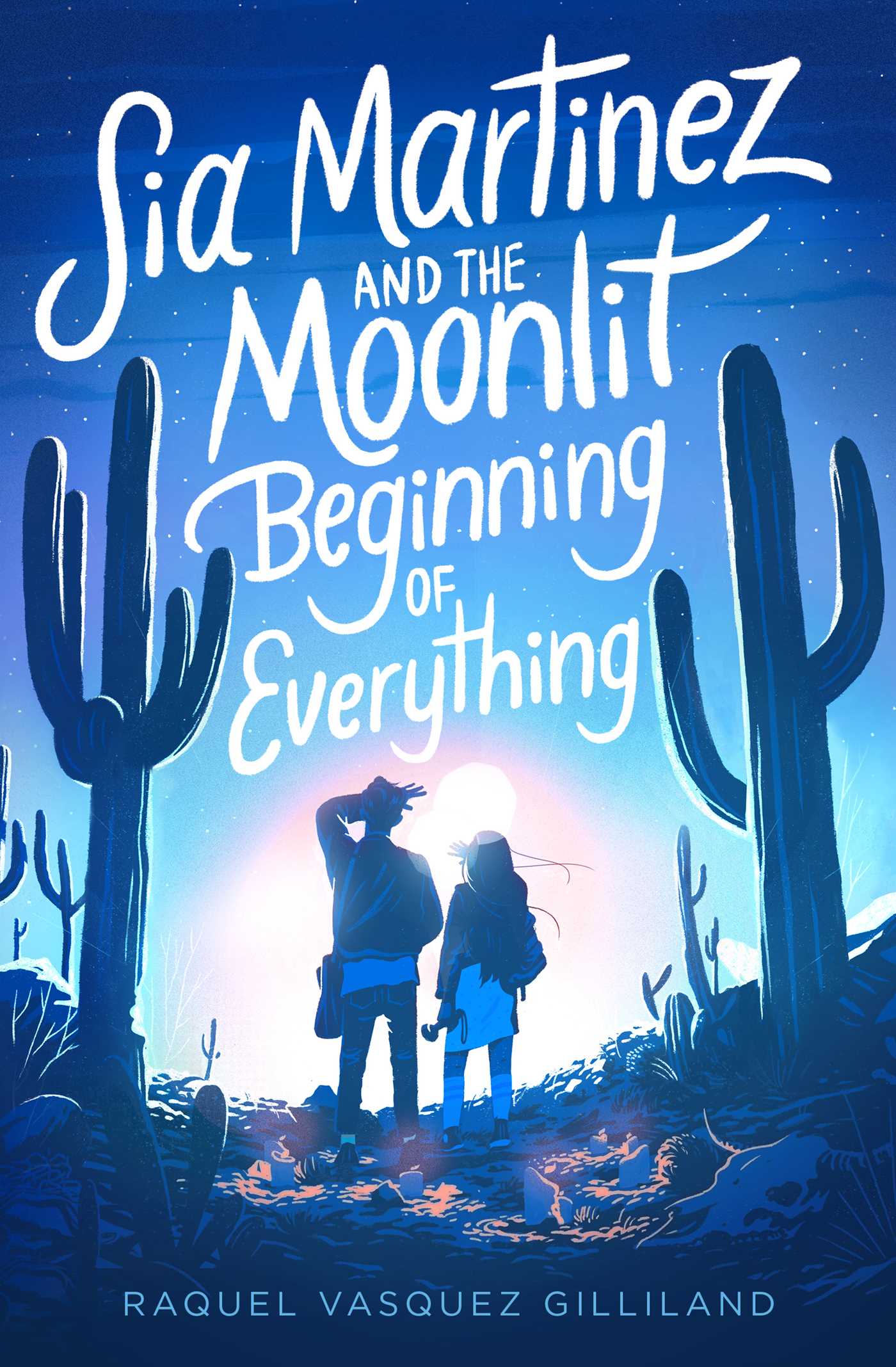

Three years ago, after ICE raids and a trek across the border, Sia’s mom disappeared. But then Sia discovers a spacecraft—and her mom. A magical, lyrical look at grief, reconciliation, and humanity.
- Chilling Effect by Valerie Valdes
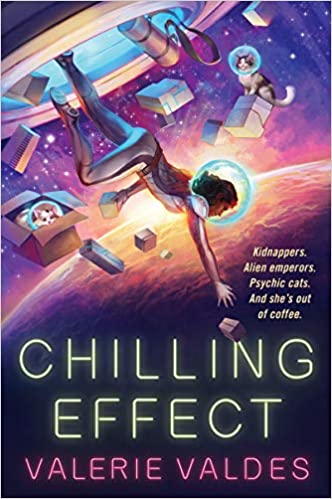

Who doesn’t want space opera with pirates, alien emperors and psychic cats? Or kidnapped sisters, shady jobs, and shadowy crime syndicates? With lovable characters and a delightful Latinx cast, you’ll want to be on Captain Eva Innocente’s crew.
- Wings Unseen by Rebecca Gomez Farrell
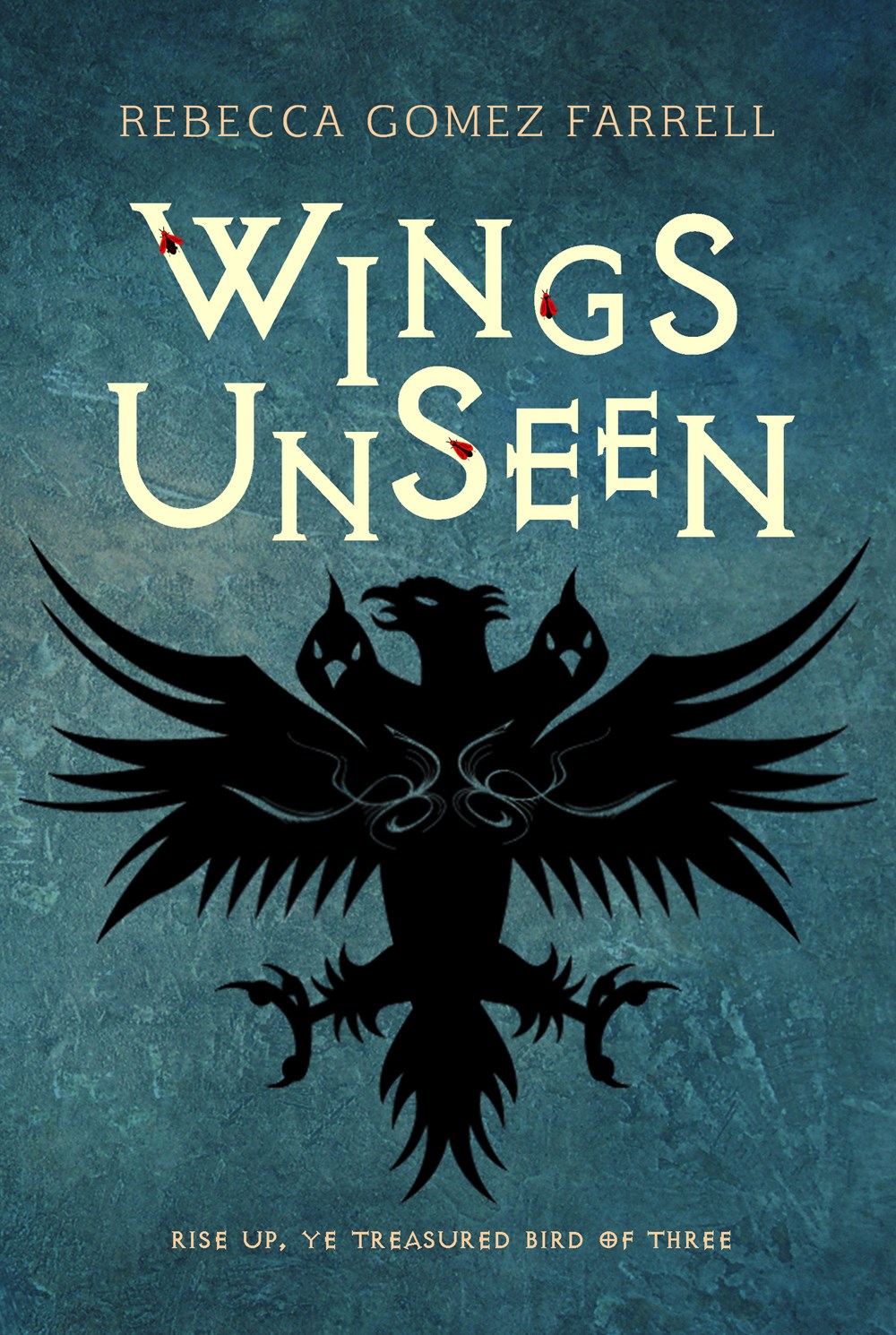

Wings Unseen has all the juicy things you’re looking for in an epic fantasy: magical young people, a prophecy, political tensions between two kingdoms, mysterious religious cults, the world’s fate in the balance—and of course, a baddie.
- United States of Banana by Giannina Braschi


This cheeky, allegorical story of Puerto Rican statehood features a Puerto Rican prisoner held under the Statue of Liberty for a hundred years. Once freed, political and economic implications compound. It’s a thinky book of big ideas.
- The Storm Runner by J.C. Cervantes
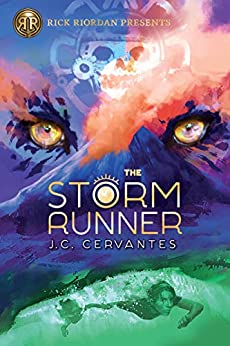

Set in New Mexico, scrappy young heroes—one who walks with a cane, the other a shapeshifter—must outwit wily gods in this action-adventure woven with Mayan mythology. Who knew the volcano in the backyard led to another world?
- Ink by Sabrina Vourvoulias
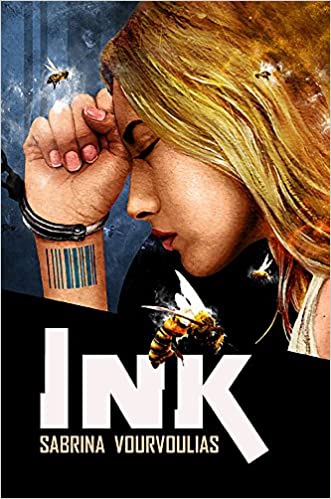

What if anti-immigrant rhetoric manifested into institutionalized population tracking? Vourvoulias’s America tattoos barcodes on everyone with their immigration history, and the ink muddles further the ideas of home, citizenship and community.
- Sweet Black Waves by Kristina Pérez
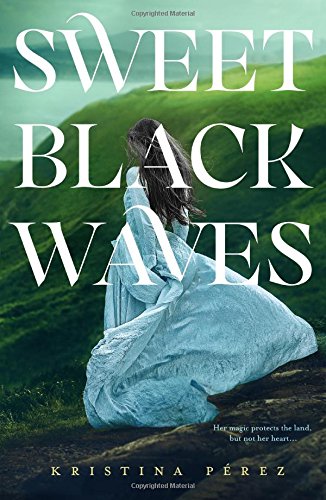

Feuding kingdoms and forbidden romance abound in this lush, feminist retelling of Tristan and Eseult, but from the point of view of Branwen, Eseult’s lady’s maid. You’ll love Branwen’s powerful magic—and also that she’s had enough!


Don’t Tell Me I Can’t Do It!
The Sirens Review Squad is made up of Sirens volunteers, who submit short reviews of books (often fantasy literature by women or nonbinary authors) they’ve read and enjoyed. If you’re interested in sending us a book list or review to run on the blog, please email us! Today, we welcome a book list by Tina LeCount Myers.
I have a penchant for willful, stubborn, go-against-the-grain heroines. Especially those with a goal or a vision. I enjoy reading these characters because they act as a reminder to me about what is possible when one stops being nice and says NO to others and YES to self. Seen as selfish or unreasonable by those around them, these heroines often struggle, not only against the outside world but also their intimate circle of family and friends. These heroines rarely have it easy: They suffer the consequences of their actions and convictions. But ultimately, they have a richer life for saying, “Don’t tell me I can’t do it!”
If you share my affinity for these kinds of heroines, you might like to read:
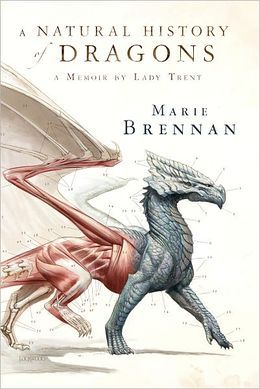
“Don’t tell me I can’t go on a scientific expedition to study dragons!”
In this Victorian-esque fantasy, main character Isabella Trent chafes under what is expected of a proper lady. While she agrees to marry, she does so for the man’s library and not his wealth. And when she grows tired of the social expectations of a wife, she convinces her husband that an expedition to find rock-wyrms (dragons) is just the ticket. Although Isabella tries to balance social norms with her own desires, it is her calling as a dragon naturalist that takes precedence. Her recounting of the expedition unfolds much like the diaries of intrepid British male explorers of the 19th nineteenth century. This is a book for readers who enjoy maps, illustrations, and crisp writing with their cup of tea.

“Don’t tell me I can’t have a life of my own!”
The roaring twenties in Mexico are alive with jazz and ancient gods in this book. Main character Casiopea Tun dreams of a life away from her small, dusty town in southern Mexico, where she is treated like a servant in her family. When she inadvertently frees the God of Death, she is drawn into his quest to regain his power. Acting as his ally, Casiopea risks her own death to get the life she has always dreamed of. This is a beautifully written book with tension at every turn. It is a story for readers who enjoy magical realism and a walk through the shadows of the underworld and perhaps a companion piece for those who have read Labyrinth Lost by Zoraida Córdova.
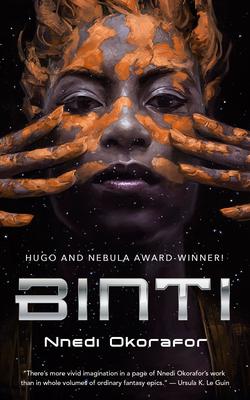
“Don’t tell me I can’t go to the best university in the galaxy!”
There is a world out there to explore, but while Binti’s people are focused on gaining knowledge, they do not leave Earth. However, main character Binti, who is mathematically gifted, has the chance to attend Oomza, a prestigious university on a distant planet. With her isolationist-family set against it, if Binti leaves, she risks hurting them. If Binti goes, she knows she will face deep prejudice. Although it is a novella, released in a series, this book has more world-building in 96 pages than most with 500 pages. A quick, engrossing read for those who enjoy Africanfuturism and the short stories of Octavia Butler and Ursula Le Guin. This book proves that small can be powerful.
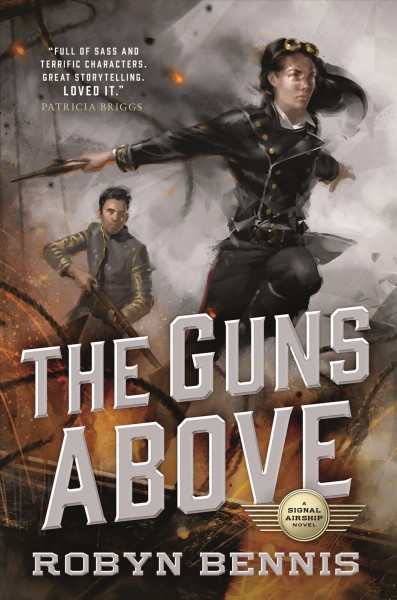
“Don’t tell me I can’t command a military airship!”
This steampunk novel comes with cannon-fire, dirigibles, and a snarky heroine. Meet Auxiliary Lieutenant Josette Dupre, who has good reason to have an acerbic outlook. While the Air Signal Corps of Garnia is co-ed, women are only allowed “auxiliary” roles. Josette, however, has her eye on command and nothing is going to stop her, not a dubious crew nor a dandy spy. Josette is tough, canny, and ready to trade barbs and pistol-fire—whatever it takes to win. I read and listened to this book in tandem. Both versions merit a “Huzzah.” Readers who enjoyed Naomi Novik’s His Majesty’s Dragon will appreciate the military detail, this time with a woman at the helm and one who has a sense of humor.
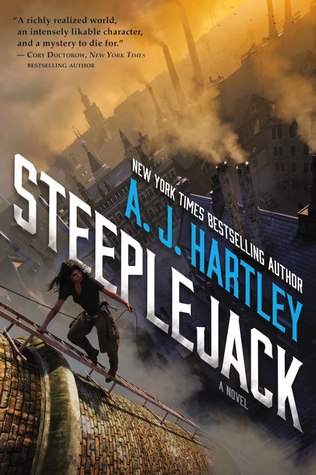
“Don’t tell me I can’t care for a baby and solve the theft of an artifact and the death of a young boy!”
In this post-colonial steampunk story, the scales are stacked against main character Anglet Sutonga. She’s an immigrant, she’s a female steeplejack, and she’s the third daughter—a curse to her family. When she finds her apprentice dead on the day an artifact disappears, she is not only convinced they are linked, she is determined to find out the truth. Caught between the machinations of apartheid leaders and the care for her sister’s baby, Anglet must convince others what she knows in her heart. She can do it. Readers of Nisi Shawl’s Everfair and Justina Ireland’s Dread Nation will find a heroine who does not take no for an answer
 Tina LeCount Myers is a writer, artist, independent historian, and surfer. Born in Mexico to expat-bohemian parents, she grew up on Southern California tennis courts with a prophecy hanging over her head: Her parents hoped she’d one day be an author. Tina lives in San Francisco with her adventurer husband and two loud Siamese cats. The Song of All is the first book of her epic fantasy trilogy, The Legacy of the Heavens. You can follow Tina on Twitter @tlecountmysters and learn more about her work on her website.
Tina LeCount Myers is a writer, artist, independent historian, and surfer. Born in Mexico to expat-bohemian parents, she grew up on Southern California tennis courts with a prophecy hanging over her head: Her parents hoped she’d one day be an author. Tina lives in San Francisco with her adventurer husband and two loud Siamese cats. The Song of All is the first book of her epic fantasy trilogy, The Legacy of the Heavens. You can follow Tina on Twitter @tlecountmysters and learn more about her work on her website.

Sirens at Home: Books and Breakfast Selections
On Friday, October 23, 2020, we will hold our Books and Breakfast program online as part of Sirens at Home. If you’d like to join us, please do! All you need to do is register for Sirens at Home, read one of the following selections, grab your breakfast, and join the online discussion.
Sirens at Home Books and Breakfast Selections
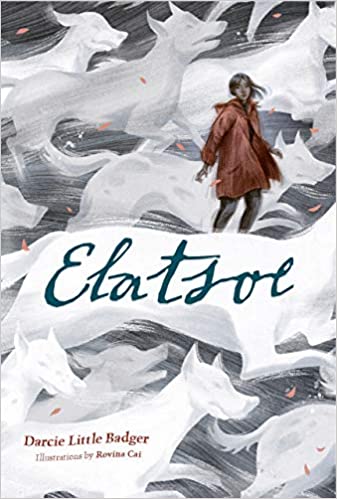
Elatsoe
by Darcie Little Badger (illustrations by Rovina Cai)
Elatsoe, or just Ellie, is your average teenager trying to figure out her place in the world and what she wants from life—except that her contemporary America has ghosts, vampires, and fae, and Ellie herself can raise the ghosts of dead animals. Think really dead animals, like mammoths and trilobites, not merely Ellie’s more recently dead dog, Kirby. As Little Badger’s work opens, Ellie’s cousin dies surprisingly and violently, confirmed first by paranormal reverberation that shocks Kirby and a dreamland visitation of Ellie’s. In a bit of a backward mystery, Ellie’s determined to find the clues that will lead to what she already knows: who killed her cousin. Little Badger’s work incorporates the traditions and legends of the Lipan Apache tribe (of which she is an enrolled member) and makes them integral to both her fantastical America and Ellie’s deductive skills. You’ll love Ellie—and you’ll clamor for a book about Six Great, her fabled foremother who looms large in Little Badger’s America.

Never Look Back
by Lilliam Rivera
A contemporary retelling of Orpheus and Eurydice featuring Afro-Latinx characters in the Bronx, Never Look Back hums with bachata rhythms and the pulsing possibilities of hazy summer nights. Pheus, the popular golden-voiced bachata singer among his circle of friends, is drawn to Eury, a newly arrived girl from Puerto Rico. Eury is processing the trauma of her family losing everything in Hurricane Maria, and she’s haunted by a spirit whose only desire is to have her with him, always. Mythologies intertwine in this straight-talk novel fused with magical realism, and Rivera seamlessly weaves in examinations of colonialism, toxic masculinity, class, and mental health. This is both a romance and a book about community, and the relationships that strengthen it are a highlight—particularly Eury’s relationship with her cousin Penelope, and Pheus’s with his father. You already know what happens at the pivotal climax; Eury’s agency and empowerment makes this read as catchy as the tunes within.
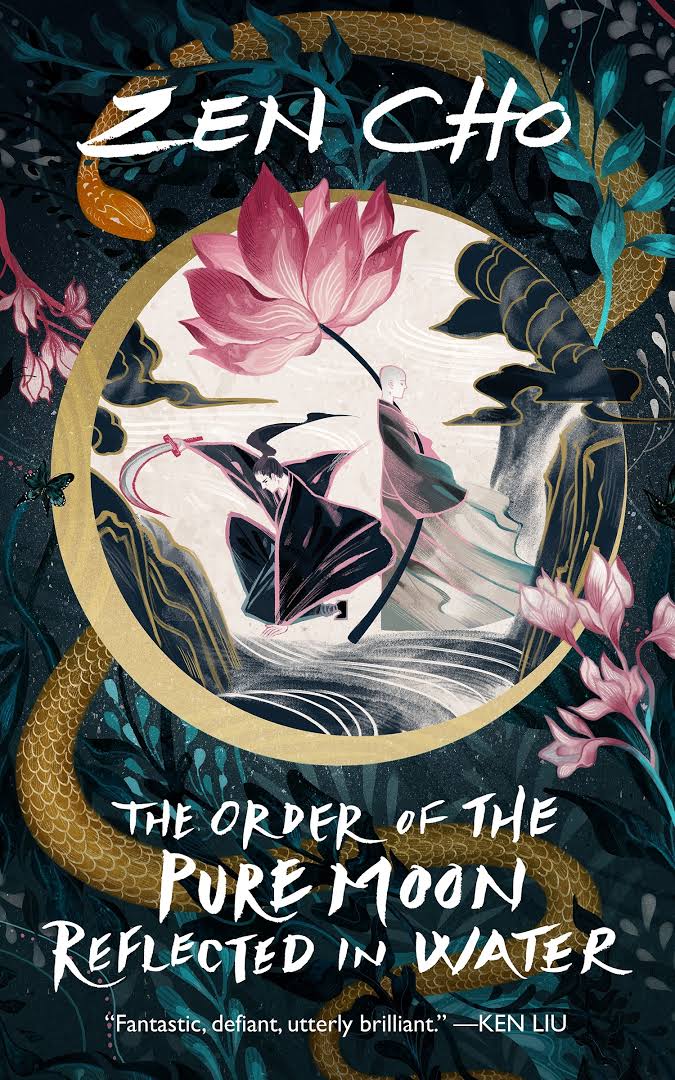
The Order of the Pure Moon Reflected in Water
by Zen Cho
Though a greater war bleeds beyond its pages, The Order of the Pure Moon Reflected in Water centers a small group of roving bandits who, at the story’s beginning, convene in a coffeehouse for a job and encounter a former-nun-turned-waitress. The ensemble cast will please lovers of found family, though the narrative is driven by Tet Sang, a bandit with a past of his own who feels compelled to pull Guet Imm, the waitress, into the group. Cho’s novella is a masterclass in subtlety; instead of an epic volume that features wealthy nobles or expert warriors, it spotlights everyday people who make individual choices in the name of survival. There’s magic and violence—secondary to the interpersonal relationships among the characters—and a delightful queer romance woven so intricately within the action that you never forget there’s a bigger set piece. Reading this book is like becoming one of the crew.
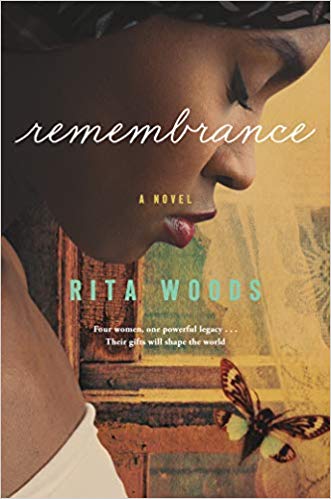
Remembrance
by Rita Woods
By debut author Rita Woods, Remembrance is an ambitious blend of historical fiction and fantasy ultimately about the safe haven created by Black women throughout—and beyond—time. The multiple points of view give the work tremendous scope (and will appeal to fans of epic fantasy in particular): Gaelle in present-day Cleveland, Margot in 1857 New Orleans, Abigail in 1791 Haiti, and the mysterious Winter. As the characters face plagues, rebellion, slavery, death and separation of loved ones—and disenfranchisement in the most extreme sense of the word—we’re introduced to Remembrance, a refuge for slaves who do not make it out of the Underground Railroad. As the narratives converge, you’ll appreciate Woods’s thorough research and delicate hand, and how each of the women comes into her magic. She relates what we know to be true: Black women have been building sanctuary for their communities throughout generations.
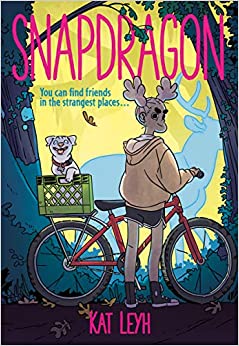
Snapdragon
by Kat Leyh
You already know Kat Leyh’s work as a cowriter and cover artist for the inimitable Lumberjanes comic series, but you’re about to know her for Snapdragon as well. In this graphic work, Snapdragon, an angry, ostracized girl, encounters Jacks, the town witch, while looking for her lost dog. Jacks has Good Boy, sure enough, but only because she found him on the side of the road and patched him up. When Snap, desperate for friends, finds orphaned possums, she ends up back at Jacks’s house—and Jacks strikes her a deal: She’ll help Snap care for the possums if Snap helps her with her business recovering dead animals and assembling their skeletons for sale on the Internet. That’s just the beginning of a work that weaves—through all of Snap’s anger and Jacks’s isolation, Snap’s mother’s trying to balance everything and Snap’s friend’s coming out, and a surprising thread of magic—a delicately human story about finding yourself, whoever that person might be, and finding a community, however unexpected that might be. In the end, Snapdragon is a sob-fest, happy-ending story about giving folks a chance, and sometimes even two.
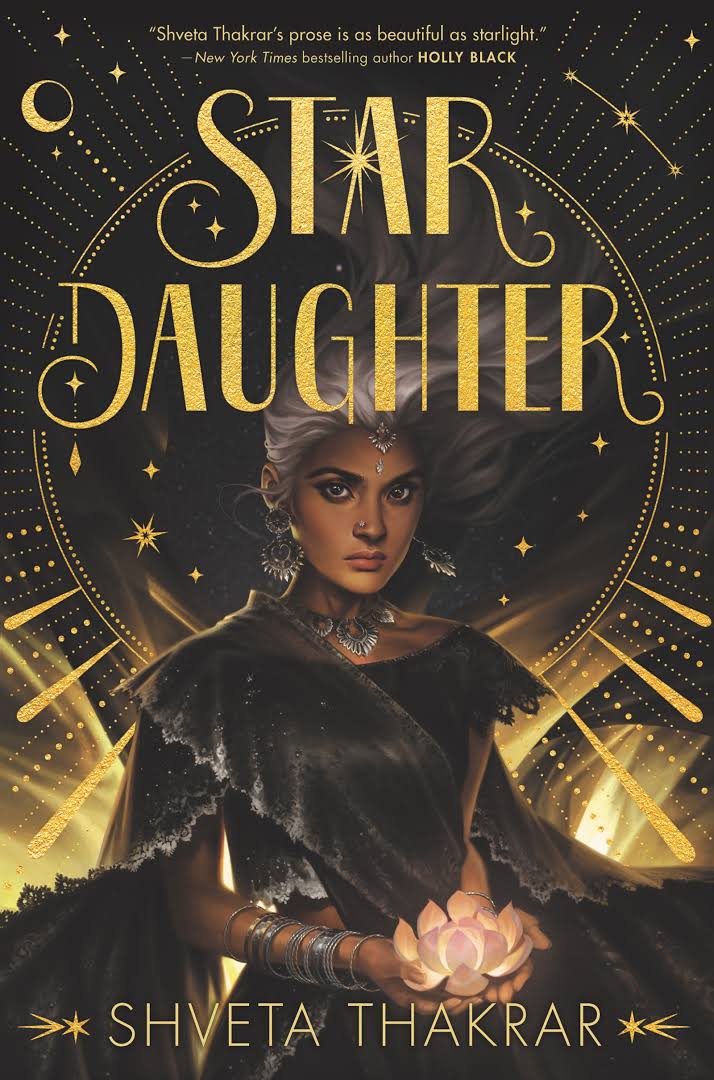
Star Daughter
by Shveta Thakrar
Sheetal’s mom is a star. A real, live star, who lives in the heavens and left Sheetal alone with her father when Sheetal was a little girl. Now a teenager, full of big dreams and bigger feelings, Sheetal finds herself torn between her modern desi-girl American life, full of expectations and accomplishments and a forbidden boyfriend, and staring at the night sky, wishing for her mom—and wishing that she didn’t have to dye her starlight hair dark and hide that the stars call her name. Lately that call has become stronger, and Sheetal finds herself caught up in something she doesn’t understand. She accidentally harms her father and must ascend to the sky to heal him. But of course none of this happened by chance: Her star family wishes for Sheetal to compete for them in a competition that will determine control of the stars for years to come. In all of this, Sheetal is a dang delight: all too real, and by turns flattered, confused, and furious with her star family. And as she navigates the politics of the stars, her nascent relationships with her family, and her erstwhile romance with her boyfriend, she’s the sort of heroine who’s always in charge of herself, no matter what her maternal grandmother might think.
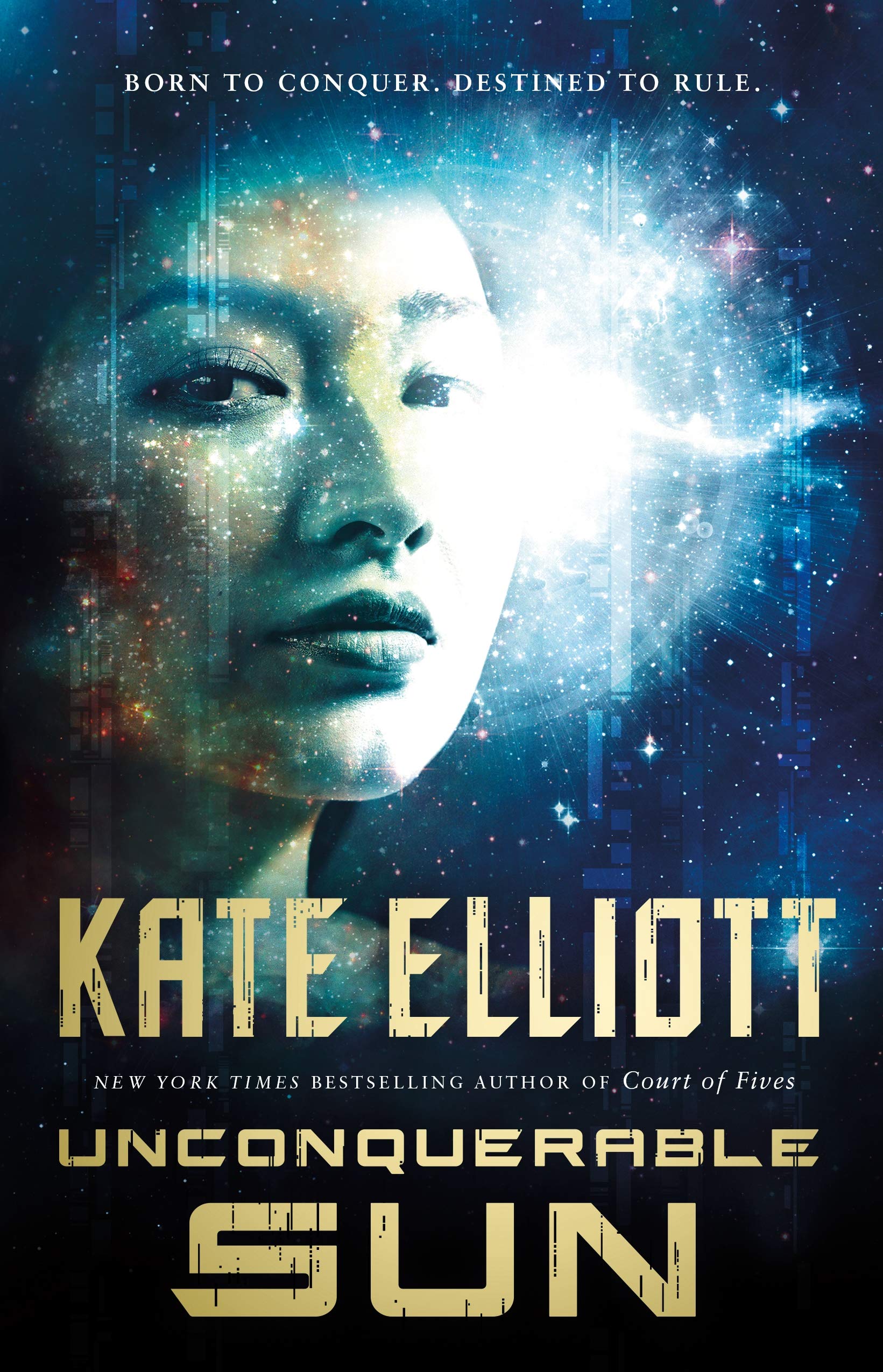
Unconquerable Sun
by Kate Elliott
If “genderflipped Alexander the Great in space” doesn’t grab you, then perhaps “genetically engineered human-aliens, cutthroat galaxy-spanning politics, queernorm worldbuilding, and imaginative future tech” will. An exciting opening to a new series, Unconquerable Sun has plenty of Easter eggs for those with interest in classical studies, but provides a standalone, fully realized world—nay, an entire galaxy, with deep roots and evocative details. Our protagonist Sun is an astonishing hero: charismatic, decisive, brilliant, sharp; the cast that surrounds her is equally grand, from the wily Persephone to the handsome Alika, and all the rest of Sun’s Companions. Elliott has taken some risks in the way she handles the various point-of-view characters, changing person and tense in a way that helps the reader feel the soul-deep shifts between each character. It pays off: The book is an enthralling adventure from start to finish.

Mexican Gothic Holds the Precise, Beating Heart of Modern Women’s Horror
Each year, Sirens chair Amy Tenbrink posts monthly reviews of new-to-her fantasy books by women and nonbinary authors. You can find all of her reviews at the Sirens Goodreads Group. We invite you to read along and discuss!
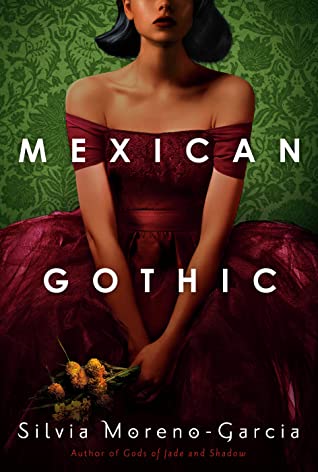
On page 186 of Silvia Moreno-Garcia’s Mexican Gothic, Noemí, our heroine, is mid-conversation with Virgil, the heir apparent of High Place, a crumbling family mansion in rural Mexico. She is in Virgil’s bedroom in the middle of the night, after experiencing a disturbingly vivid sexual dream featuring Virgil and his aggressive masculinity. The first words of the following exchange are Noemí’s:
“Were you in my room?”
“I thought I was in your dream.”
“It did not feel like a dream.”
“What did it feel like?”
“Like an intrusion,” she said.
As a reader, this is the sort of revelatory writing that requires that you put the book down and find something, anything—in this case, a Bath and Body Works coupon—to mark the page. Because this exchange is the precise, beating heart of modern women’s horror.
Let’s begin with a bit about Mexican Gothic. Noemí is a socialite in 1950s Mexico, mostly happy with her rounds of dresses and parties and beaux, but still, always, a girl who wants more: currently, a master’s degree in anthropology. When her family receives a nonsensical letter—troubling for all its nonsense—from her cousin, Catalina, Noemí’s father agrees to permit her to pursue that master’s degree, if only she’ll go check on Catalina and her new husband, Virgil, at High Point. Noemí takes the deal and is soon on a train, suitcases in tow.
Moreno-Garcia draws Noemí cleverly: She’s an assertive girl, but also a pretty one, and one who is accustomed to things being just so, one who thrives on appearances and flirtations and delicately upending social niceties with just the right amount of perceived danger. Because of who Noemí is, High Point reads initially as simply off-putting: dusty, moldy, faded, the home of an impoverished family unable to keep up with either cleaning or modern conveniences like electricity. Similarly, the household’s exacting rules—no talking during meals, no unsupervised time with Catalina, no second medical opinions—are designed to imply merely that Noemí has encountered a society foreign to her, one that a pretty girl cannot manipulate with smiles and teasing. But over time, through alarming conversations with her cousin, who seems only sometimes lucid, and forbidden conversations with locals, who share legends and mysteries, but rarely more, Noemí realizes that High Point is more menacing than simply unkempt, and the rules more dangerous than simply irritating.
Shirley Jackson’s seminal work of feminine horror, The Haunting of Hill House, was published in 1959, the same decade as the setting of Moreno-Garcia’s Mexican Gothic. In 60 years, though, women have gained new terrors—and new insight into familiar terrors. Jackson’s work is about mothers, domineering, demanding mothers who, even after death, haunt our lives. How almost quaint, through a 2020 lens, to focus on the issue with mothers, rather than the issues with the heteropatriarchy that so often make them that way. Moreno-Garcia’s work, while clearly an heir to Jackson’s, goes deeper and is not so willing to elide the roles that men play in women’s terrors.
Mexican Gothic is a work about intrusion, specifically a work about men’s innumerable intrusions into women’s lives. Without spoiling the mystery or the jump scares, Moreno-Garcia’s work turns on the many, many things that men take from women and the sacrifices that women are required to make to perpetuate men’s power. This isn’t a work about Noemí’s mother, who is nearly absent from the book, even in reference. It is a work about her father, in his wealthy naivete; Howard, the ailing, racist head of the High Point family; Virgil, the skillfully abusive heir apparent; and Francis, the weak-willed cousin. And it’s a work about the women who enable them—Florence, Francis’s mother and the household disciplinarian, and Catalina, Noemí’s compliant cousin—and Noemí, who does not.
At its best, Mexican Gothic uses its horrors to lay bare the quotidian horrors of women, forced to endure a lifetime of male intrusions.
At its worst, we need to talk about Moreno-Garcia’s use of rape, attempted rape, and sexual assault. Mexican Gothic is about male intrusions into women’s lives and, in many ways, very specifically about male intrusions into women’s bodily autonomy, both small (you may not take the car alone, you may not speak during dinner) and large (you may not leave High Point). In exploring those themes, Moreno-Garcia turns, often, to rape, attempted rape, and sexual assault. With a single exception (the final horror imposed on a woman, revealed at the book’s climax), in this work that is so much about bodily autonomy, Mexican Gothic assumes that rape is the ultimate intrusion that a man can force upon a woman. Regardless of whether you agree with that, Mexican Gothic uses rape, attempted rape, and sexual assault liberally—and in my view, too often. We know that Howard and Virgil are threats and, by the midway point of the book we know enough about High Point’s history to know that they are both sexual threats. Because we know that, most of these scenes read as unnecessary, no longer a horror that Howard or Virgil is imposing on Noemí, but a horror that Mexican Gothic imposes on its readers. Men intrude on women’s lives in so many ways; must the second half of Mexican Gothic rely so heavily on this one?
Setting aside its arguable overreliance on the horrors of sexual assault—if you are able to, of course—Mexican Gothic is a must-read for anyone interested in both female horror and its evolution. Moreno-Garcia takes Jackson’s themes from 60 years ago and transforms them, erasing the mother in favor of striking at the heart of the heteropatriarchy itself. In a world where we are all told to be more likeable, where our options are always limited, and yes, where we all fear assault, Moreno-Garcia’s house of horrors will be all too familiar.
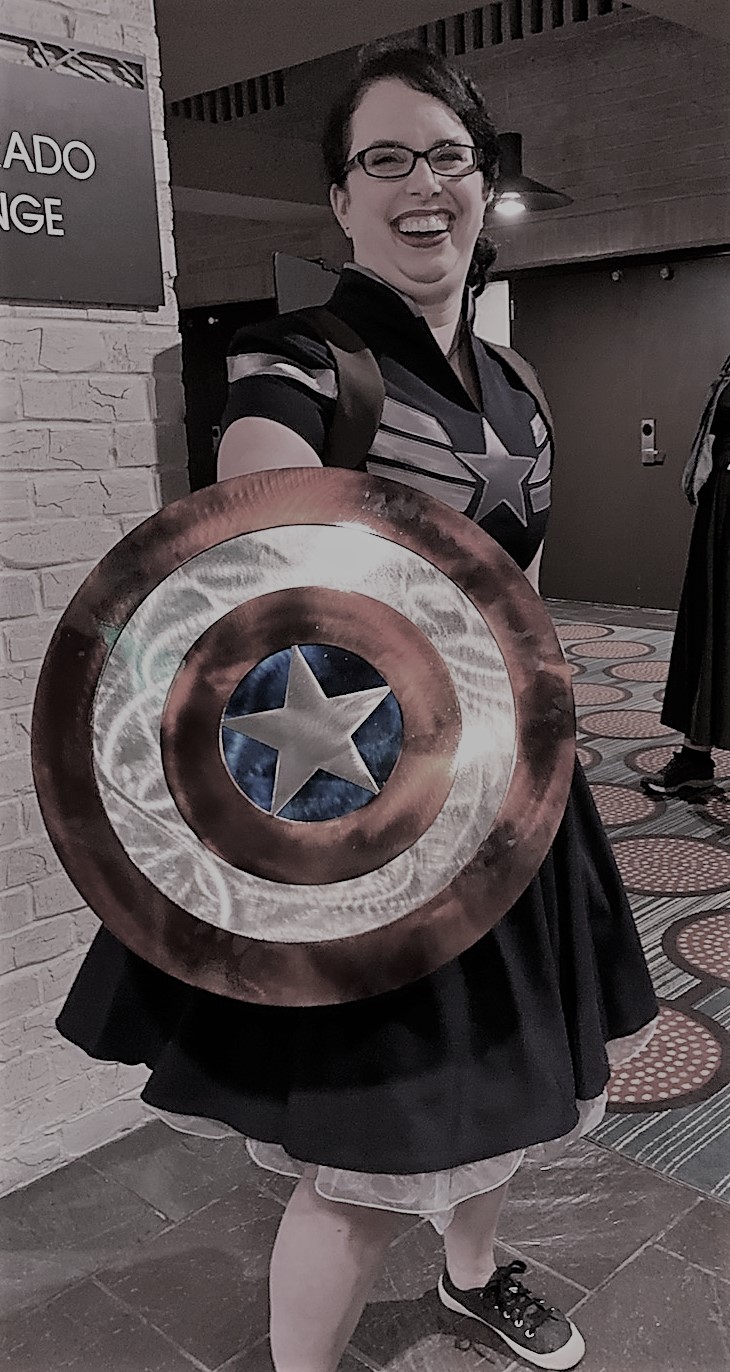 By day, Amy Tenbrink dons her supergirl suit and handles strategic and intellectual property transactions as an executive vice president of a major media company. By night, she dons her supergirl cape, plans literary conferences, bakes increasingly complicated pastries, and reads 150 books a year. She is a co-founder and current co-chair of Sirens, an annual conference dedicated to examining gender and fantasy literature. She likes nothing quite so much as monster girls, flagrant ambition, and a well-planned revolution.
By day, Amy Tenbrink dons her supergirl suit and handles strategic and intellectual property transactions as an executive vice president of a major media company. By night, she dons her supergirl cape, plans literary conferences, bakes increasingly complicated pastries, and reads 150 books a year. She is a co-founder and current co-chair of Sirens, an annual conference dedicated to examining gender and fantasy literature. She likes nothing quite so much as monster girls, flagrant ambition, and a well-planned revolution.



Exclusive Sirens Interview: Isabel Schechter
Today, Sirens communications team member Faye Bi interviews Isabel Schechter, a longtime member and builder of speculative communities!
FAYE BI: You have been part of science fiction and fantasy fandoms for over twenty years. What are some of the ways that fandom has evolved for you, both online and in person? What do you hope for the future of SFF spaces and fandoms?

ISABEL SCHECHTER: The internet has done a lot to shape the evolution of fandom, but part of the draw of fandom is that no matter the technology, it’s about the ability to make connections. Before LiveJournal, Dreamwidth, Facebook, and Twitter, if I wanted to communicate with fans that weren’t local to me, I had to wait a year for a convention to reconnect with other fans. Today, I can connect with anyone, anywhere, anytime.
This year, because of the COVID pandemic, most conventions were cancelled or held virtually—something that would not have been feasible twenty years ago. Although it wasn’t the same as being with people in person, it did provide at least some way to connect with friends and loved ones. Hopefully some conventions will make program recordings available to all attendees—no more need to be in two panels at once! Some conventions (Sirens included) have started hosting Zoom events for convention attendees to connect with each other outside of conventions during the pandemic, and I would love to see that kind of connection continue once the pandemic is over.
I would also love to see fandom become more diverse and inclusive. WorldCon (the World Science Fiction Convention) and related fannish conventions have been working on this, albeit sometimes only because social media activism in fandom has forced them to learn from their mistakes. There is still work that needs to be done to get programming to be more reflective of and inclusive of all parts of the community. There also has to be a greater push to get WorldCon convention runners and convention site selection voters to be more open to having the convention take place in locations outside of North America.
FAYE: You are a member of a number of SFF communities and have attended so many SFF cons—and you’ve even written about how to create a welcoming community. Besides the POC dinner you mentioned, what are some other moments of connection that stand out? And what are some of your favorite con memories?
ISABEL: Fandom has not always been as welcoming as it is today, and it still has a long way to go in this area. RaceFail in 2009 laid bare the ugliness of racism in science fiction fandom and the science fiction industry. It was such a horrendous experience that my chest still gets tight when I think about it. That experience was the antithesis of welcoming. What came out of it, however, was a realization in White fandom that POC did exist in fandom and we needed to be treated as valued members of the community. Codes of Conduct were created and have been improved upon yearly, Con or Bust was created, and POC dinners and meetups are now regular events at some conventions.
I have been able to make connections at every convention I’ve attended. I remember being on a panel about found family and I started bawling and soon so was everyone else in the room. I’ve gotten cramps from laughing so hard at the Not Another F*cking Race Panel (a WisCon institution). I’ve been quite undignified at several WorldCons by jumping out of my seat and yelling in a most unladylike manner at the Hugo Awards ceremony because a friend just won a Hugo. I’ve also gone into a Spanish-language reading at a WorldCon thinking I hated poetry and walked out thinking I simply had to read every single poem written by one of the authors participating. I have danced at too many convention dances to count.
One of my most empowering experiences in fandom was at the 2018 WorldCon in San Jose, California. That was the year that John Picacio started the Mexicanx Initiative. There were more than fifty Mexicanx fans and creators at the convention because of the Initiative, and although I am not Mexicanx, I am a Latina, and it was affirming to be surrounded by people who spoke my language (literally), who ate the same food, and who danced to the same music. There were also so many POC (not just Mexicanx) attending the convention that we had to split up into multiple groups for the POC dinner.
FAYE: Along with Michi Trota, you are the editor of The WisCon Chronicles Volume 12: Boundaries and Bridges, recently available from Aqueduct Press! How did you get involved in this project? What did you love about it? Can you tell us anything about your next creative project?
ISABEL: I attended my first WisCon twenty years ago. At the time, I had no real fannish friends or connection to SFF fandom, but now WisCon has become an annual family reunion of many of the most important people in my life. I have had several essays in previous volumes of The WisCon Chronicles, and I was honored when Aqueduct Press invited me to edit this year’s volume. I have benefited from being a part of the WisCon community and I wanted others to share their experiences and hopefully inspire others to do the same.
It was important to me that the collection of essays represent the experiences of a variety of attendees, and invited Michi to share my vision to help bring to light diverse WisCon experiences. The collection includes essays from new and longtime fans and con-goers, writers at all stages of their careers, privileged and marginalized people, and even two pieces in Spanish. The part I am most proud of is knowing that I provided a space for those voices to be heard. It is my hope that they will continue to be heard.
For my next project, I would like to write about women’s friendships. Until I found WisCon, I had very few female friendships and a lot of internalized misogyny to deal with. I’m grateful to the wonderful women in fandom I’ve become friends with who have helped me grow in this area, and want to explore this aspect of women’s lives.
FAYE: What people might not know about you is that you are also a graduate of divinity school! What role does faith play in your SFF reading and community?
ISABEL: First, I have to say that while I believe in God, and that works for me, I don’t expect anyone else to believe the same thing. I don’t believe that my belief is the only right one, nor is my religion the only right one. And I absolutely don’t believe that atheists are incapable of being good or moral people just because they don’t believe in a higher power. Religion can be a wonderful thing that inspires people to act justly and righteously, and it can also contribute to pogroms, crusades, and inquisitions. The wonderful part is what I choose to practice.
I once heard someone at a convention say something about the role of how/why/what if in the relationship between science, science fiction, and religion that really struck me. What I took from that has helped inform my reading of SFF.
I have never believed that science and religion are mutually exclusive, and am perfectly comfortable believing that God created, well, Creation, and simultaneously knowing that evolution is real and provable. If we really are created in the image and likeness of God, then doesn’t it make sense that we should strive to learn about everything in Creation, and even do our own part in creating so as to live up to that image and likeness? Religion explains why we were created, and science explains how Creation works. And then there’s science fiction, which asks “what if?” What if we could use science to create a new world by terraforming? It would take longer than seven days, but even so. What if we could use science to go beyond reproductive technologies like IVF and create living androids? It would be more complex than using ribs, and we would have to be careful not to treat living beings as mere things to serve our needs. What if we could create a society where peace and equality were fully realized? And not just in idyllic gardens. What if?
FAYE: Why did you first decide to come to Sirens? And then why did you decide to come back to Sirens?
ISABEL: I was intrigued by a hundred-person convention focused specifically on women in fantasy. I regularly attend conventions with a thousand attendees, and WorldCons with several thousand attendees, so a hundred people on such a focused subject was well outside the norm for me.
I asked a friend about her experience with Sirens, and based on her feedback, I decided to attend. Sirens’s programming is thoughtful, and I’ve learned a lot. One of my favorite program items is the one where folks from the conference committee recommend books, and I am ever so grateful that Sirens arranges shipping so I don’t have to figure out how I’m going to fit all my purchases in my luggage!
Sirens’s programming was the initial draw, but the other attendees are really why I keep coming back. I’ve met smart, nice, funny, and welcoming people at Sirens. I know that they are committed to making Sirens a place where people can come together and discuss women and fantasy literature in a thoughtful, engaged way, and they are genuinely interested in keeping the community going outside the conference.
FAYE: Sirens is about discussing and deconstructing both gender and fantasy literature. Would you please tell us about a woman or nonbinary person—a family member, a friend, a reader, an author, an editor, a character, anyone—who has changed your life?
ISABEL: It’s simply not possible to name only one person. Although there are certain women who have played an immeasurable part in my life, I didn’t get to be who I am because of any one person or interaction. There is no one turning point—each has built on the one before.
There was my seventh and eighth grade teacher who told me I could do and be more than the narrow role my culture has assigned me. There was the friend in high school who lived her life without apologizing for having sex on her terms. There was my Jewish mentor who set an example of a Jew By Choice that was every bit as “real” as someone who had been born Jewish. And all the women in fandom that welcomed me into the community and treated me as a human being worthy to be valued.
Each of these women has been the person I needed them to be at that particular point in my life, and all those points together have shaped me into the person I am today. As I continue to find more of these kinds of women, I will grow and change, refine and expand my understand of my identity and my role in the world.
Questioning and rebelling against authority was frowned upon for girls in Isabel Schechter’s family. Anyone who knows Isabel is not shocked that she was considered an ill-behaved girl. Although other parents punished their children’s inappropriate behavior by revoking their television privileges or not allowing them to go out with friends, Isabel’s mother tried to be more strategic and instead revoked Isabel’s library privileges. Sadly for Isabel’s mother, this did not result in good behavior and instead led Isabel to check out the maximum number of library books allowed at one time (twenty-one!) and then stash them around the house for when the need arose. It arose quite often.
Isabel’s childhood love of books led her to discover the “Choose Your Own Adventure” books, a popular gateway drug to science fiction and fantasy. Even though she was an avid reader, Isabel did not encounter organized science fiction fandom until adulthood. In the twenty-five years since then, she has been attending fannish conventions, including twenty years attending WisCon (the foremost feminist science fiction convention), and is a frequent panelist at conventions. Isabel has also volunteered as staff for a variety of conventions, including WisCon, WorldCon, and the successful bid to bring the 2017 North American Science Fiction (NASFiC) to San Juan, Puerto Rico.
Isabel’s essays on race and representation in science fiction and fantasy have been published in Invisible 2: Essays on Race and Representation in SF/F, Uncanny: A Magazine of Science Fiction and Fantasy, and several volumes of the WisCon Chronicles; and she is coeditor of The WisCon Chronicles Volume 12: Boundaries and Bridges. She is Puerto Rican, feminist, child-free, Jewish, vegetarian, and a Midwesterner living in Southern California, and embraces the opportunity to represent the fact that no one of those identities excludes any of the others.
Faye Bi works as a publicity director in New York City and spends the rest of her time cycling, reading, pondering her next meal, and working on the Sirens communications team. She’s yet to read an immigrant story she hasn’t cried over and is equally happy in walkable cities and sprawling natural vistas.

Books and Breakfast: Girls Made of Snow and Glass, Slice of Cherry, and Wilder Girls
For our 2021 conference, as we examine gender and villainy, and relatedly, redemption—fraught topics full of artificial constraints and defied stereotypes—our Books and Breakfast program features titles meant to broaden that examination. We’ve chosen eight works, full of questions, but few answers; dastardly villainy, and occasional redemption; and a number of female and nonbinary villains who may, despite or because of their villainy, be someone worth celebrating.
Earlier this summer, we highlighted our graphic selections: Monstress: Awakening and Nimona; and our adult selections: A Feast of Sorrows, Queen of the Conquered, and The Mere Wife. Today, we’re showcasing our three young adult selections: Girls Made of Snow and Glass, Slice of Cherry, and Wilder Girls. We hope these features will help you make your choice and tackle your reading before Sirens next year.
2021 BOOKS AND BREAKFAST SELECTIONS
A Feast of Sorrows by Angela Slatter
Girls Made of Snow and Glass by Melissa Bashardoust
Monstress: Awakening by Marjorie Liu and Sana Takeda
Nimona by Noelle Stevenson
Queen of the Conquered by Kacen Callender
Slice of Cherry by Dia Reeves
The Mere Wife by Maria Dahvana Headley
Wilder Girls by Rory Power
Girls Made of Snow and Glass by Melissa Bashardoust
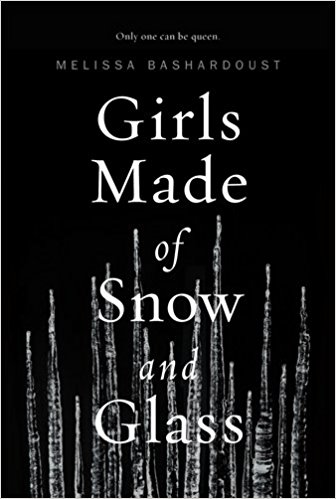
In this take on “Snow White,” sixteen-year-old Mina, missing a heart, escapes one abusive household for another—where she can capture the love of the king for herself, even his power, provided she is ready, so young, to become a stepmother. She’s to be mother to Lynet, who has been conjured to life in her mother’s image from a snowfall. And as in “Snow White,” the two are set at odds. Mina has been loved too little, and wants the crown any way she can have it. Lynet, conversely, has no desire to be queen, and would be happy enough to spend her days with her girlfriend and to be looked on as something besides the embodiment of her mother.
The evil stepmother is a classic villain: cold, beautiful (but in a scary way), a usurper. In Bashardoust’s version, the stepmother must take that role, whether she wants to or not, and her relationship with Lynet, close in age, is complex and painful. It’s bittersweet that the two have been positioned as enemies, and the wedge between them makes the story compelling. Rarely do we see mother-daughter relationships in stories about young adults; even more rarely do we see them in fantasy books for young adults. Mina and Lynet’s intertwined stories provide a rich exploration of relationships between women—with all the twisty, messy, emotional resonance that non-romantic relationships have in real life, and don’t always get their due on the page.
Girls Made of Snow and Glass is full of icy atmosphere and fairytale references, but at its heart—no pun intended—it’s a story about love. What we do to receive love. How we choose whom to hate, and whom to mark as villain. How villains can be created by society. And it’s also about mothers and daughters, and how we make families. How we tell stories, and how the telling makes heroines and villains. And how, in the end, we can choose the stories told for us or choose to make our own.
Slice of Cherry by Dia Reeves

Kit and Fancy Cordelle are sisters, daughters of the infamous Bonesaw Killer, a serial killer who ravaged Portero, Texas, before being caught and jailed. But no matter how strange Portero is—if you’ve read Reeves’s Bleeding Violet, surely you remember how strange Portero is—no matter how much Bonesaw Killer fan mail still arrives at the house, and no matter that neither Kit nor Fancy had anything to do with their father’s murders, Kit and Fancy are ostracized. Surely the apple couldn’t have fallen too far from the tree—a convenient statement when one seeks to oppress Black girls. But never mind that: Kit and Fancy will tell you that they don’t mind. They’re the best of friends (as Fancy says, practically the same person).
And despite their previous innocence, they are perhaps not so different from their father after all—or perhaps assumptions are a powerful catalyst: Kit and Fancy both harbor a desire to harm, to carve people up and stitch them back together, to pull them apart until they crack, to kill. Unlike their famous father, though, Kit and Fancy will be the first people to tell you that they harm only those who truly deserve it, those who touch or invade or harm first. They’ll also tell you that they’re smarter than their father: They use a mysterious doorway to another world to cover their tracks. And everything would be fine, perhaps—Portero surely won’t look too hard for a few missing predators—except that, despite Fancy’s assertion, Kit and Fancy aren’t the same person at all. Kit wants to grow and change, make friends, and have a boyfriend, while Fancy wants to stay in her tiny, controlled world, happily basking in the gore that she and her sister share.
Slice of Cherry is, in every way that matters, a Black feminist revenge story. In Kit and Fancy’s vigilantism, Reeves claims violence for Black girls harmed by the world. Kit and Fancy are broken by their father’s crimes, their mother’s absence, the town’s ostracization, and seemingly everyone’s assumptions. But that brokenness creates neither victims nor, despite the carnage, villains. Kit and Fancy take their power, claim their power, every time they cut an attempted rapist, every time they stab an intruder. Don’t shy away from the danger and violence of Portero; Reeves’s story of Black girls who are cast as villains but who will not be victims is one for our world, too.
Wilder Girls by Rory Power
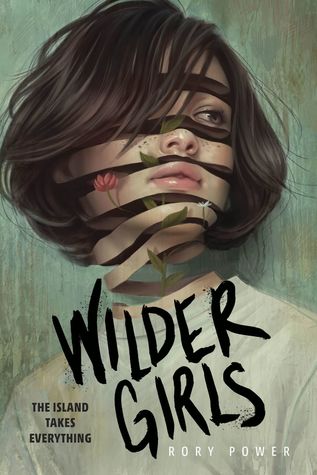
As you begin Wilder Girls, the students and instructors at Raxter School for Girls in rural Maine have been quarantined for 18 months. That’s when the Tox began ripping through the country, causing grotesque mutations in people, fauna, and flora alike: second spines, new organs, scales, eventually death. Outbreaks are individual and unpredictable, but at this point, the girls are just holding on, relying on supplies from the outside world, and hoping for a vaccine.
Hetty, one of the students, is unexpectedly chosen for Boat Shift, one of the few jobs that can get a girl off school grounds, in this case to retrieve those all-important supplies. With this new responsibility comes new knowledge, and Hetty sees the transformations and destruction around her in a new, even more desperate light. And that desperation pervades Wilder Girls, which is built on the dawning horror that things can always, and so often do, get worse. Without giving too much away, after 18 months of increasing desolation, Hetty finds a villain—and it’s worse than she could have imagined.
The foundation of Wilder Girls is its (almost) all-female cast—and the possibilities born of crafting a book around only female characters. The mean-girls trope you often see in YA is absent—jettisoned along with boys and the omnipresent white heteropatriarchy—and instead Power creates girls that are just girls: sometimes smart, sometimes ambitious, sometimes mean. Sometimes they get along and sometimes they don’t. Some are heroes and some are villains and some are neither. This isn’t some quarantine-created feminine utopia, but rather a cast of real girls who are real people in an impossible situation. You might call it a feminist utopia. And that is magnificent.














































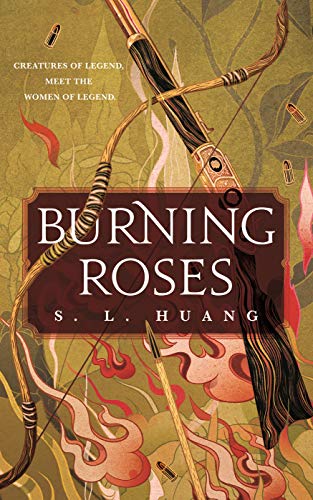
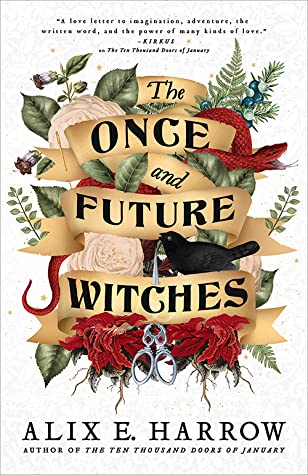













































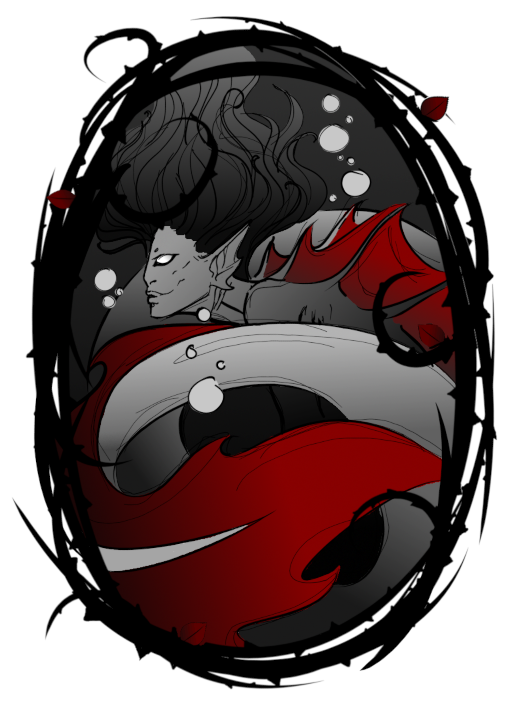

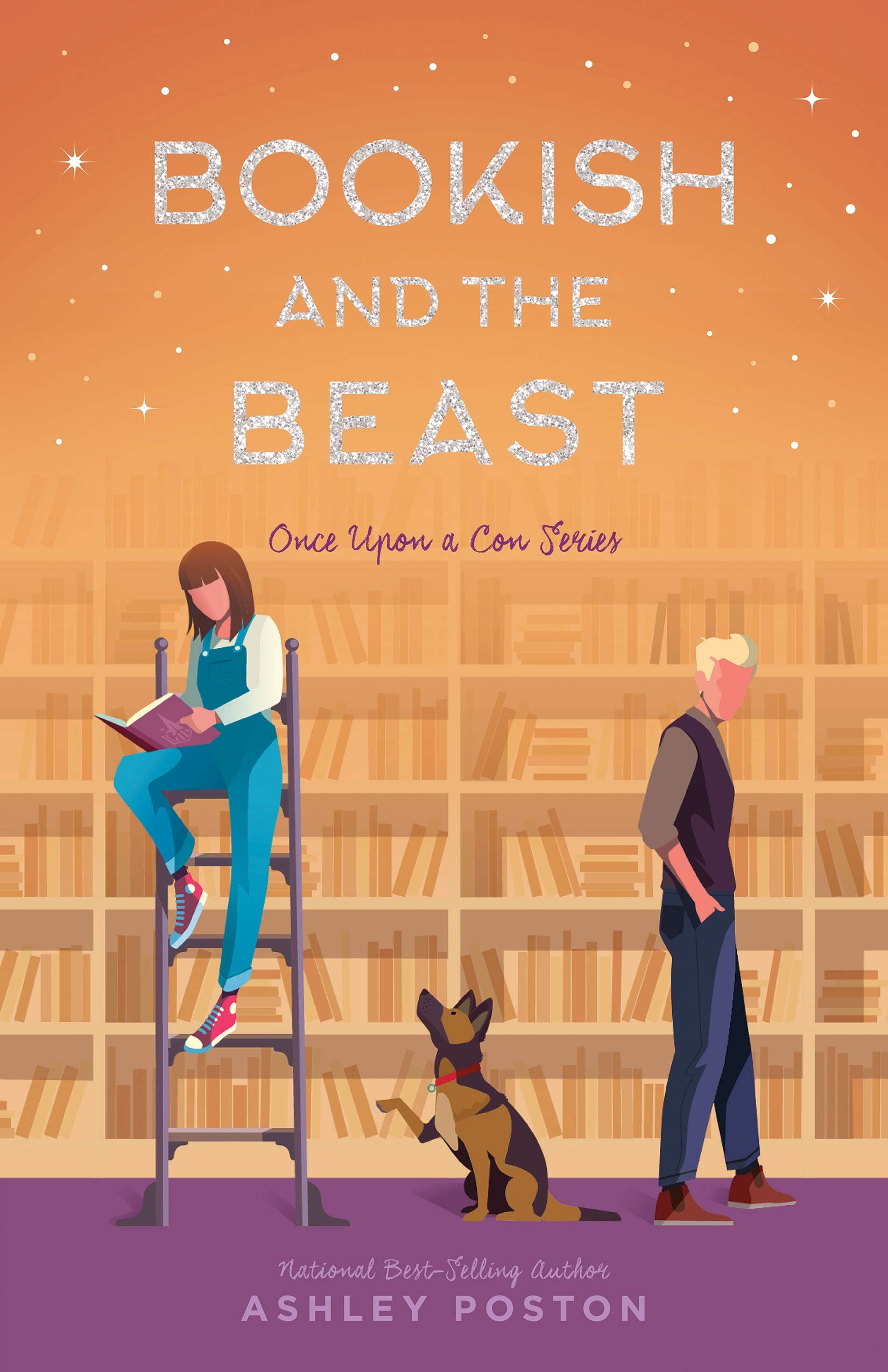



Connect with the Sirens community
Sign up for the Sirens newsletter